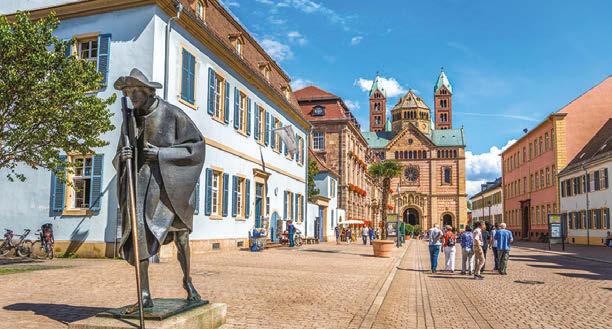SOUND OF






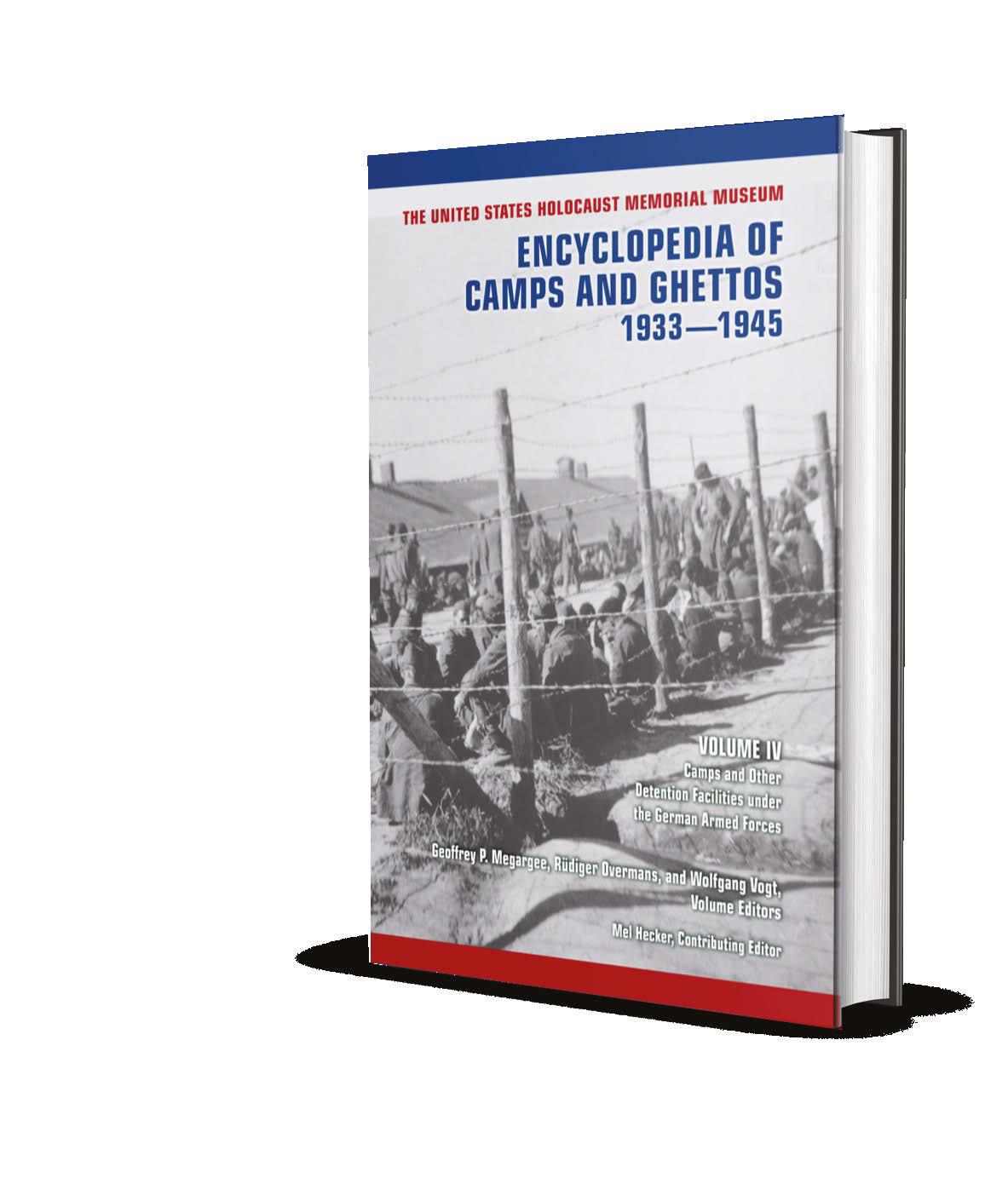





Over more than 74 years, ordinary men and women devoted their lives to help build a new Jewish state. Many of these pioneers are now aging, frail, impoverished and alone. They need our help.

With more than 7,000 volunteers and 120+ branches throughout Israel, Yad Sarah is dedicated to helping to provide for Israel’s less fortunate — especially those who have sacrificed so much, who have dedicated their lives to build a nation.
We provide home and health care support services that enable people in Israel to remain independent at home and in their own communities despite illness or frailty.
Return the favor of service to Israel's Builders by supporting Yad Sarah today.
 Eva H.
Eva H.
Violinist Ksenia Kozodoi, a Ukrainian graduate of Meir Shfeyah Youth Aliyah Village, plays for a crowd at the farewell party of Hadassah’s 100th Convention in Jerusalem. Coverage of the convention begins on page 22.
Zibby Owens’s podcast and brand may be tagged “Moms Don’t Have Time to Read,” but her days are nevertheless filled with books. An author herself, Owens’ s growing media network features a publishing house, an online magazine and, soon, a brick-and-mortar bookshop in California. Her new shop comes amid a resurgence of independent bookstores after a steady decline that coincided with the rise of the internet. The trend includes shop owners across the country whose Jewish values help drive their mission of creating community around literature and ideas.




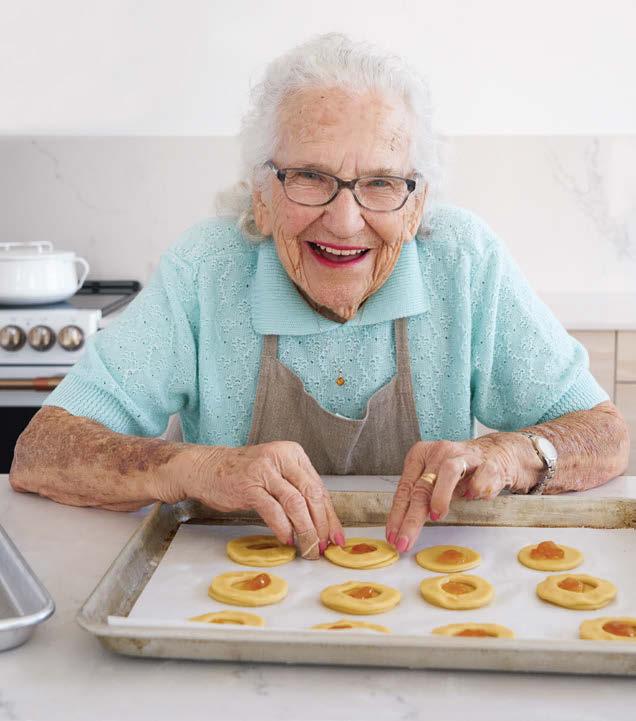 By Lisa Hostein
By Lisa Hostein

The healing work of Hadassah was on full display throughout the four days of the convention as well as during the wide array of pre- and postconvention programming. It was on display at the numerous gatherings where doctors, nurses and their patients recounted poignant and often miraculous journeys from illness and injury to recovery. It was on display at the two hospital campuses where attendees witnessed the innovative medical technology and pioneering work being done. And it was on display among the more than 350 leaders, members, associates and staff who reveled— with dancing, singing and schmoozing—in the opportunity to physically come together after nearly three years of a pandemic that had relegated most Hadassah activities to Zoom.
Life on the precipice of adulthood can be fraught with loneliness and anxiety about the future. According to reports, rates of youth mental health issues, including anxiety and eating disorders, have been climbing for over 10 years. Now, several peer-to-peer adolescent and young adult initiatives launched by various Jewish groups in the United States are seeking to engage young people wrestling with social and emotional challenges.
Never let a crisis go to waste.” Winston Churchill said that during World War II, but the concept has been a motivating force for Hadassah since our founding.
In 1918, the American Zionist Medical Unit—the mobile hospital we dispatched to British Mandate Palestine and later grew into our medical center—arrived while the British were still battling Turkish forces 40 miles from Jerusalem. We built the leading hospital in the Middle East during the Great Depression. Youth Aliyah, our temporary project to house and educate child refugees from Nazi Germany, grew into a critical part of Israel’s educational infrastructure for immigrant and at-risk children—and still flourishes 90 years later.
And during the long struggle with Covid-19, we recognized the potential in the world’s adaptive response— and Hadassah’s—to the pandemic. In September 2021, I wrote in this column, “The relief goes far beyond the immediate sensation of returning to normal. The mRNA vaccines that protect more people every day represent a medical revolution that will pay many dividends in the future.”
I also noted that instead of the years or even decades it took to develop vaccines for smallpox, measles, typhoid, yellow fever, polio and other diseases, the mRNA process produced a Covid shot in 11 months, and that this process likely would lead to better flu vaccines with quicker updates and perhaps longer protection. This method of produc-

ing vaccines could also accelerate the effort to develop ones for HIV, rabies and future viruses.
One disease I did not mention was cancer, but that’s the frontier we are staring at now: In September 2022, the Hadassah Cancer Research Center, the Hebrew University-Hadassah Medical School and pharmaceutical giant Merck launched a partnership to study the use of mRNA technology to treat cancer.
COULD BE HELPFUL IN DEVELOPING A DRUG FOR CANCER.
with Merck was announced, I joined leaders from other innovative Israeli medical institutions at the Jerusalem Post Annual Conference in a panel discussion entitled “The Future of Health Care.” Among the topics discussed were drones, the ability to predict who will develop mental illness in the future, new drugs to treat a variety of diseases, and organoids, which are tissue cultures derived from stem cells. Much of the discussion would have sounded like science fiction just a few years ago—and some of it still did.
One of my interlocutors on the panel was Dr. Shai Novik, executive chairman of Enlivex Therapeutics, which, among other projects, is currently conducting clinical trials on a treatment for ovarian cancer.
“Everything started with the Covid-19 vaccine,” observes Dr. Michal Lotem, head of the Hadassah Cancer Research Center at the Hadassah Medical Organization’s Sharett Institute of Oncology. “The vaccines taught us how powerful messenger RNA can be.” The technology that gave the Pfizer and Moderna vaccines their high level of stability and low incidence of side effects, Dr. Lotem believes, could be helpful in developing a drug for cancer.
It goes without saying that not all medical research leads to breakthroughs. But our collaboration with Merck is an indicator of how quickly things are moving and also of Hadassah’s position on the cutting edge of progress.
Shortly before our partnership
“If you look at the history of drug development, you can see that every now and then there is a wave of innovation that opens up everything, and that has happened several times in the last 100 years,” Dr. Novik said. “I think we are coming to a new wave.”
Henrietta Szold may not have pictured waves of medical innovation when she arrived in Jerusalem in 1909, but the sight of children with flies hovering around their swollen red eyes both saddened and inspired her to launch a multipronged revolution in medicine as well as for women and the Jewish people.
Poverty and disease have always challenged us to find solutions, but we can’t dwell too long on our successes. The next crisis is always around the corner, accompanied by opportunity.
We are thrilled to share our new Tree of Healing Gift Program featured on a beautiful glass wall, within the Round Building’s Promenade entrance.
Tree of Healing is visible to all who enter — and on each of its 360 glass leaves will be etched the name of a donor who has made a new gift* of $10,000. Take


Tree of Healing
the rebirth
Kerem’s Round Building. Please contact Miki Schulman, chair, 360° of Healing, The Full Circle Campaign, mschulman@hadassah.org or your Major Gifts Officer. *Gifts may be paid over two years. Available to individuals only.

HADASSAH M EDICAL O RGANIZATION The Full Circle Campaign

HADASSAH, THE WOMEN’S ZIONIST ORGANIZATION OF AMERICA, INC. The solicitation disclosure on page 54 is incorporated in this advertisement. A copy of Hadassah’s latest Financial Report is available by writing to the Hadassah Finance Dept., 40 Wall Street, New York, NY 10005.
Hadassah, The Women’s Zionist Organization of America, Inc. Hadassah and the H logo are registered trademarks of Hadassah, The Women’s Zionist Organization of America, Inc.
CHAIR Marlene Post
EXECUTIVE EDITOR Lisa Hostein
DEPUTY EDITOR Libby Barnea
SENIOR EDITOR Leah Finkelshteyn
DIGITAL EDITOR Arielle Kaplan
EDITOR EMERITUS Alan M. Tigay
DESIGN/PRODUCTION Regina and Samantha Marsh
Roselyn Bell
Ruth G. Cole
Nancy Falchuk
Gloria Goldreich
Blu Greenberg
Dara Horn
Ruth B Hurwitz
Carmela Kalmanson
Francine Klagsbrun
Anne Lapidus Lerner
Curt Leviant
Joy Levitt
Bonnie Lipton
Marcie Natan Nessa Rapoport
Sima Schuster
Susan S. Smirnoff
Barbara Topol
HADASSAH NATIONAL PRESIDENT Rhoda Smolow

ADVERTISING
Celia Weintrob, Advertising and Marketing Manager
Phone: (212) 451-6283 Email: cweintrob@hadassah.org
Randi O’Connor, Advertising Sales Associate Phone: (212) 451-6221 Email: roconnor@hadassah.org
Sara Ruderman, Ad Sales Representative
Phone: (585) 233-2050 Email: adsales.hadassah@gmail.com
CHANGE OF ADDRESS/MEMBERSHIP INQUIRIES 800-664-5646 • membership@hadassah.org
TO SUBSCRIBE DIRECTLY hadassahmagazine.org/subscribe • (212) 451-6283
LETTERS TO THE EDITOR letters@hadassah.org
EDITORIAL INQUIRIES (212) 451-6289 • magazine@hadassah.org
GENERAL HADASSAH INQUIRIES (212) 355-7900
Hadassah Magazine is published in print bimonthly. © Copyright 2023, Hadassah, The Women’s Zionist Organization of America, Inc. issn 0017-6516. Periodicals postage paid at New York, NY, and addi tional mailing offic es. Postmaster: Send address changes to Hadassah Magazine, 40 Wall Street, New York, NY 10005-1387. Subscription: $36.00.
MemberAmerican Jewish Press Association Magazine Publishers of America


Hadassah does not endorse any products or services advertised in Hadassah Magazine unless specifically noted. The acceptance of advertising in Hadassah Magazine does not constitute recommendation, approval or other representation of the quality of products or services, or the credibility of any claims made by advertisers including, but not limited to, the kashrut of advertised food products. Use of any products or services advertised in Hadassah Magazine is solely at the user’s risk and Hadassah accepts no responsibility or liability in connection therewith.
It’s a bit of an understatement to say that our planet, along with many of us who inhabit it, needs some significant healing. Think Covid, which continues to linger, as well as other viruses and chronic illnesses. Think the emotional well-being of ourselves and our children. Think climate disasters striking everywhere.
But rather than fixating on what’s wrong, we’re focusing this issue on some of the hard work being done to cure, to brighten and to repair the damage.
That story starts with Hadassah, the Women’s Zionist Organization of America, which celebrated its 100th National Convention—“Together in Israel: Our Pride. Our Purpose.”— in November with a dazzling array of programs and on-site visits, highlighting what one taxi driver in Jerusalem called Hadassah’s “holy work” (page 22).
I was privileged and delighted to attend the gathering, which brought 350-plus individuals of all ages to Jerusalem, and to meet so many of you. (And I was most grateful to hear your positive feedback about the magazine and our virtual programs!)
Of course, it’s not just our physical health with which we—and the Hadassah Medical Organization— must contend. Mental health challenges have been escalating among all segments of the population in recent years, especially among the youth. In our annual teen essay contest, co-sponsored by Hadassah Magazine and jGirls+ Magazine, we asked girls to tell us about their mental health. We were awed by the courage of so
| By Lisa Hosteinmany who candidly wrote about their struggles, and we were heartbroken by many of their stories. (The winning essay is on page 14.)
At the same time, we are heartened by teen-driven efforts to address mental health issues, as reported by Michele Cohen Marill in “A Space to Hear and Be Heard” (page 32).
The Earth, of course, is also in need of much healing. The holiday of Tu B’Shevat, which begins February 5, offers a special opportunity to focus attention on the environment. We share stories of synagogues going solar (page 11); preserving Black heritage amid an eroding climate (page 12); and a top Israeli official leading the effort to turn Israel green (page 56).
In honor of a different observance, International Holocaust Remembrance Day on January 27, Adeena Sussman explores the healing power of stories and recipes from Holocaust survivors (page 38); and a haunting art book connects us with the images and music created at the Terezin concentration camp (page 40).
Reading can be its own form of healing, which is why Hilary Danailova’s profile of book powerhouse Zibby Owens and the accompanying story on Jewish-owned independent bookstores fits right into this issue (page 16). And as always, we’ve got lots of wonderful reviews and recommended reading (page 44), so you can curl up in these winter months with a good book.
We wish you a light-filled and warm winter, and a safe and healing 2023!
© 2023 Hadassah, The Women’s Zionist Organization of America, Inc. Hadassah is a registered trademark of Hadassah, The Women’s Zionist Organization of America, Inc. The solicitation disclosure on page 54 is incorporated in this solicitation. Contributions are tax deductible to the extent permitted by law. In accordance with IRS tax laws, only the amount of your gift that exceeds the fair market value of goods and
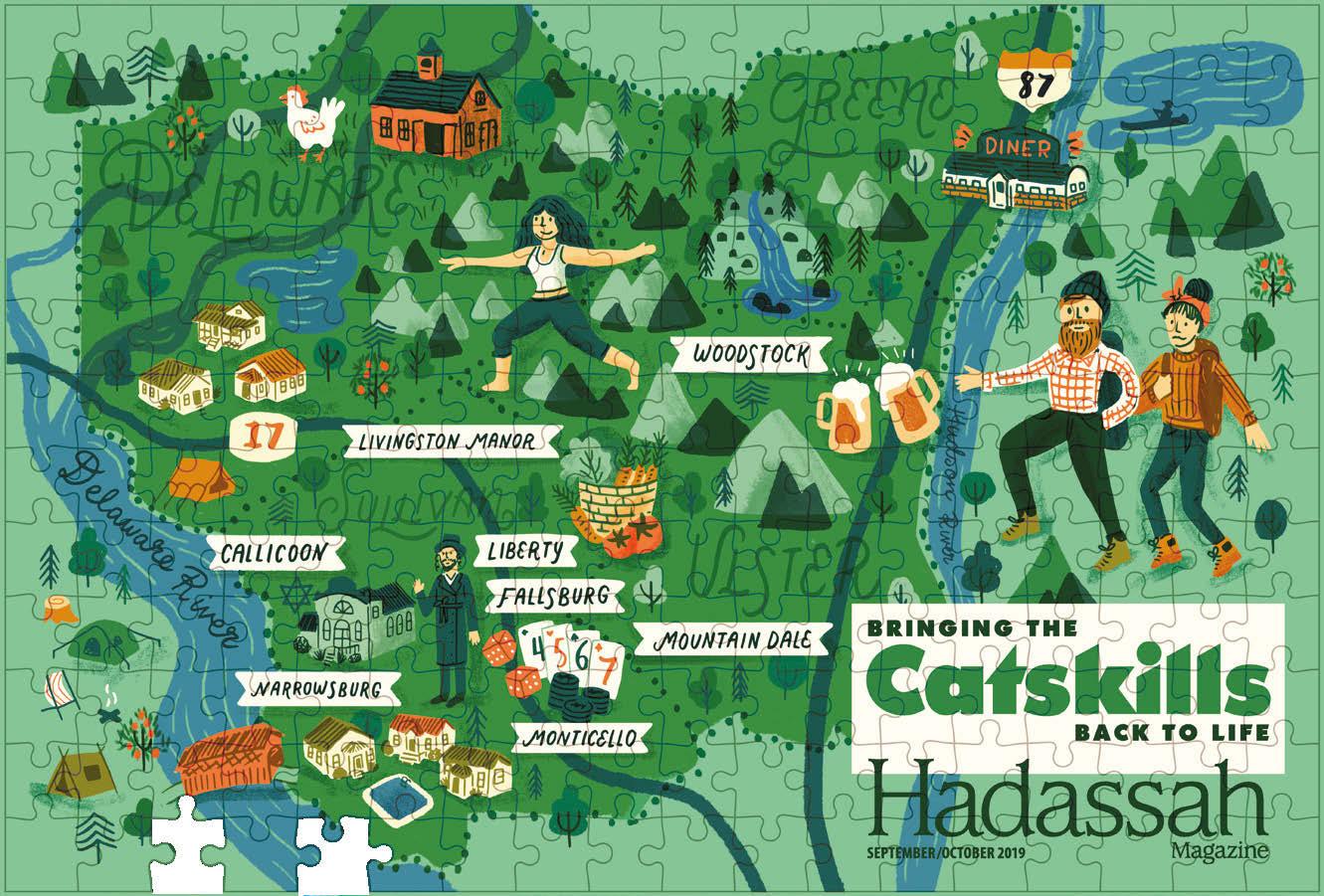
received in consideration for your gift is tax deductible as a charitable contribution. The fair market value of the puzzle offered in connection with your contribution is $36. This value represents the portion of your gift that is not tax
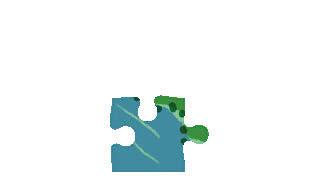

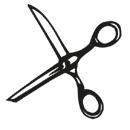
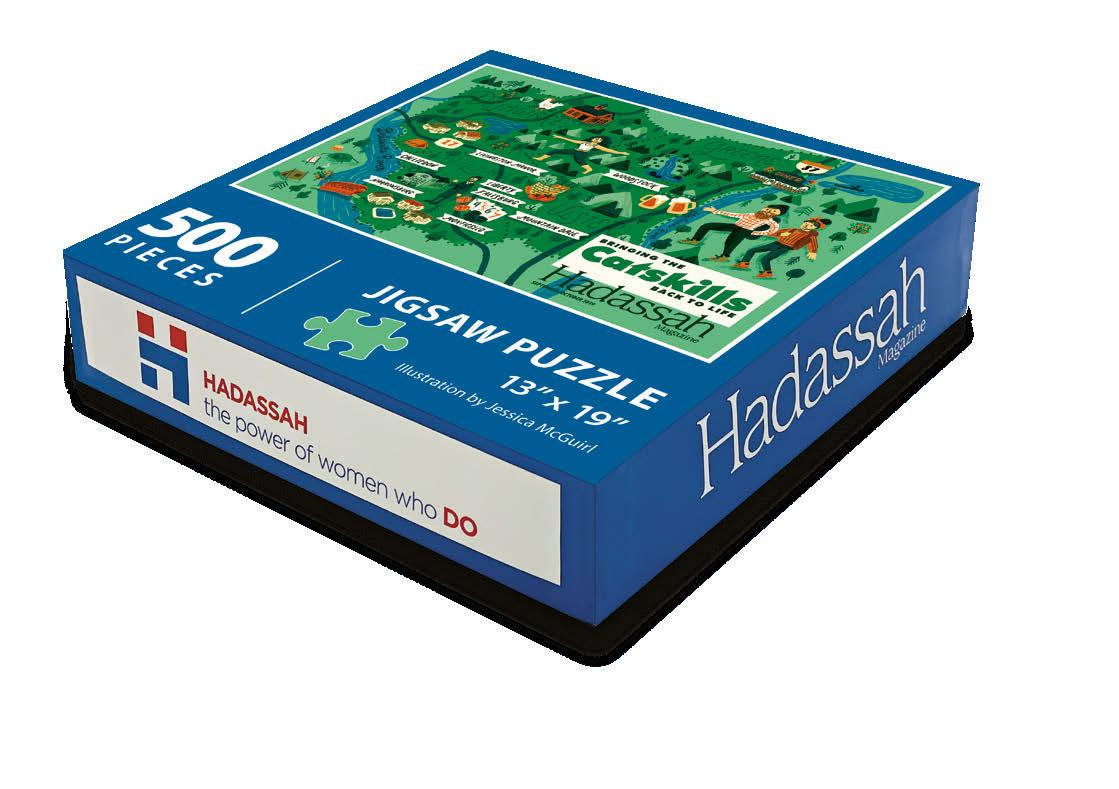
FULL OF
Reading “Breakdown in Aisle 5” by E.
Kinney Zalesne inthe November/December
2022 issue brought up childhood memories of going with my mother to small markets in Venezuela, where I was born. I learned how to order meat in the meat market, fish in the fish market and fruits and vegetables in the produce store. Much of my language about ingredients comes from that time and I don’t even know what some are called in English.
As a new immigrant to the United States in the 1990s, I often drove with my infant daughter to the supermarket when the days became very short in winter. I used the experience not only to see other people but to talk about colors, textures, names, etc., with her. Going to the supermarket was fun and therapeutic for me when I was lonely, so when I began seeing patients in the United States as a clinical psychologist, I sometimes suggested strolling through markets as a way to stave off loneliness.
Often, my patients reported feeling overwhelmed when they did go. They described episodes of intense anxiety or depression in which they would become emotionally paralyzed in front of 15 types of mayonnaise
or 50 varieties of cereal.
The supermarket seems to have the potential to be a calming and social experience as well as one of intense negative emotions, distress and isolation. Thanks for awakening these thoughts and memories in my mind.
Fla.
Patricia Jaegerman Fort Lauderdale,I was thrilled to read in the November/December issue “At This Youth Village, ‘We Are All One Family,’ ” about Ukrainian teens welcomed at Meir Shfeyah Youth Aliyah Village. As a participant in Young Judaea’s first summer in Israel program in 1951, I was privileged to spend a few


extraordinary months based at Meir Shfeyah.
As I describe in my new book, Open Up Our Eyes: Moments That Shape Our Lives, I gained a teenag er’s insight into the nascent state and the Jewish people when dysentery landed me in Meir Shfeyah’s infir mary. My roommate was a newly arrived boy from Iraq. We had no common language, but that didn’t keep us from joking and lifting each other’s spirits. That was my first en‑
Please email letters to the editor to letters @hadassah.org . To read more letters,
counter with a Jew of color as well as my introduction to the pluralistic tap estry of Israel and the Jewish people.

Kudos to Hadassah for supporting institutions like Meir Shfeyah.
Rabbi Charles A. Kroloff Rabbi Emeritus, Temple Emanu-El Westfield, N.J.
I can’t wait to read with my grand children the wonderful books highlighted in the November/Decem‑ ber issue’s roundup of new children’s titles—“Eight Books, Eight Nights”— two of which have special meaning to me. My daughter is the senior can
Angeles, and my late mother was the first woman to celebrate a bat mitz vah on the West Coast, at Temple Sinai in Long Beach, Calif., in 1939. So the story of Rabbi Sally Priesand, in Sally Opened Doors: The Story of the First Woman Rabbi, is a must read for us.
So, too, is Fighting for YES! The Story of Disability Rights Activist Judith Heumann. Heumann has been one of my heroes since my law school days when, in 1977, I witnessed first hand her 28 day protest and sit in at a federal building in San Francisco, which led to the first federal civil rights protection for people with dis abilities.
Jared GoldinAfter surviving the Holocaust, Agnes Keleti won 10 Olympic medals for Hungary, five of them gold. Now 102, she’s the oldest living Olympian, and hers is one of about 20,000 autographs and trading cards of famous Jewish people in Neil Keller’s collection.

Growing up, Keller wasn’t much into collecting, save for shiny rocks. Then, as a young man in 1986, he bought his first trading card at a flea market. It was a 1961 Topps Sandy Koufax. He was hooked.
“I was always proud of my religion,” the
62-year-old Delray Beach, Fla., resident said, “so I started to collect the Jews of baseball, basketball, hockey. Then I collected autographs, buttons, photos of politicians, athletes and entertainers.”
One item that he’s especially proud of: a rare card featuring Henrietta Szold, the Zionist leader and Hadassah founder, that was included in a 1932 pack from the cigarette company Kedem.

Through internet research, word of mouth, flea markets and other channels, Keller has also acquired more than 700 items relating to the Holocaust, including a rare 1928 postcard featuring the Dutch gymnastics team; five of its 12 members were murdered in Auschwitz.
“Five years ago,” he said, “I would have said my Hank Greenberg cards were the most valuable to me, on a personal level. Now I think it’s the Holocaust material.”
Coinciding with International Holocaust
Driving down a road in suburban Atlanta one spring day almost 13 years ago, Andrea Videlefsky noticed some daffodils in bloom. The bright yellow flowers, a harbinger of warming temperatures, gave her an idea.

Videlefsky, founder and president of Am Yisrael Chai, a Holocaust education and genocide awareness nonprofit in Atlanta, had been searching for a way to reach tweens, teens and young adults. The daffodils, with their six-petal yellow blooms, reminded her of the yellow Stars of David that Jews were forced to wear during the Holocaust.
“From that moment, I looked at daffodils in a different way,” Videlefsky said. She and her organization began to develop what she calls “an engaging, action-oriented project that would educate and inspire young people.”
Since 2010, teen ambassadors and other volunteers with the Daffodil Project have fundraised and helped to plant 758,000 bulbs in 372 locations worldwide—halfway to completing the goal of planting 1.5 million, the number of Jewish children who died in the Holocaust.
Memorial daffodil gardens now bloom every spring at schools, colleges, synagogues, churches, parks and community centers in the
first time in “Triumph of the Spirit: Jewish Ath letes Before, During and After the Holocaust” at the Levis JCC Phyllis & Harvey Sandler Center in Boca Raton, through February 28.
Karen Lazar, arts, culture and learning chair at the Levis JCC, said the center is eager to share Keller’s collection with the public.
United States and abroad. In Oswiecim, Poland, the location of the Auschwitz concentration camp, daffodils now line the site of a destroyed synagogue, while in Yaotsu, Japan, they appear on the Hill of Humanity—a memorial for local son Chiune Sugihara, the Japanese consul in Lithuania who issued thousands of life-saving visas to Jews during the Holocaust.
Daffodil Project gardens in Yaotsu, Japan (below), and at the Marcus Jewish Community Center of Atlanta

“It’s likely the only one of its kind in the world, and the depth and breadth of artifacts and information he has collected is astounding,” she said. “The stories of these athletes are inspiring, heartbreaking and truly unforgettable.”

Tu B’Shevat, the Jewish New Year for Trees, which begins this year on February 5, increasingly has become an opportunity on the Jewish calendar to invoke themes of environmental advocacy. That call-to-action rings especially loud in the nascent trend of synagogues placing solar panels on their rooftops in order to generate energy from the sun while lowering their dependence on more conventional, polluting fuels.

the primary speaker. (This year, Toronto resident and survivor Nate Leipciger will take part virtually.) In spring, an annual 5K Daffodil Dash/Walk supports young victims of more recent genocides, such as in Darfur, South Sudan and Rwanda.
“We encourage people to take the mes -
While there isn’t a centralized listing of every synagogue that has installed solar panels, as of 2019, according to research from the Jewish Climate Action Network in Massachusetts, there were at least 30 solar synagogues scattered throughout the United States—and experts there believe that several more houses of worship went solar during the pandemic. Considering that there are nearly 4,000 synagogues in America, these mostly Reform and Conservative congregations remain in the vanguard of early adopters.
In 1978, under the leadership of Rabbi Everett Gendler, the Reform Temple Emanuel in Lowell, Mass., became the first synagogue in the country to install solar panels, which provided enough energy to power the ner tamid . Gendler, who passed away last year, was a leading Jewish voice for environmental activism and frequently spoke of the connection between Judaism and climate solutions.
Today, solar panels have made their way to the rooftops of both old and modern synagogues. In 2021, the landmark Conservative Adas Israel Congregation in Washington, D.C., installed atop its 1950s-era building

a large 218-kW solar array.
On the West Coast, Congregation Kol Emeth in Palo Alto, Calif., constructed a brand-new campus with a massive solar array that achieves net-zero energy. Other sustainable features of the redesigned Kol Emeth—whose community, which dates to the 1960s, had outgrown its original building—include rainwater collection and the use of salvaged wood as construction material. Kol Emeth is one of few synagogues to obtain LEED Platinum Certification from the United States Green Building Council.

Rabbi David Booth, the spiritual leader of the Conservative congregation, is among those who place a Jewish value on protecting the environment.
“Jewish law and ethics mandate care for the Earth,” Booth said. “We must preserve, protect and cherish this Earth for it is a gift given to us to hold for the Divine.
“Kol Emeth, by designing a place that lives by these values, moves these values from the abstract to an actual place,” added the rabbi. “It takes a value and gives it a tangible form. People can stand in this place and be moved by its holiness and be inspired to take specific action to preserve this beautiful planet given us by God.”
—Stuart Rodnick —Cathryn J. Prince Keller’s signed photo of gymnast and Holocaust survivor Agnes Keleti; (far left) a rare Henrietta Szold collectible card
Adas Israel Congregation in Washington, D.C., installed its solar array in 2021.
Salvaged wood wraps the new structure of Congregation Kol Emeth in Palo Alto, Calif.
—Cathryn J. Prince Keller’s signed photo of gymnast and Holocaust survivor Agnes Keleti; (far left) a rare Henrietta Szold collectible card
Adas Israel Congregation in Washington, D.C., installed its solar array in 2021.
Salvaged wood wraps the new structure of Congregation Kol Emeth in Palo Alto, Calif.
It’s sunday morning and i’m in church again, greeting the regulars and bear-hugging the pastor. Miss Marleen asks after my children. Mr. John wants to know about my health. Miss Claudia says she’ll add me to the prayer list when I tell her I may need surgery for nagging abdominal pain.
Martin Luther King Jr. famously said: “Church is still the most segregated major institution in America. At 11:00 on Sunday morning when we stand and sing and Christ has no east or west, we stand at the most segregated hour in this nation,” with Black worshipers and white ones self-separating.
But for the past year, I’ve been crossing that barrier, attending services on and off at Macedonia United Methodist Church, a Black congregation on Deal Island, a flood-prone peninsula on Maryland’s Lower Eastern Shore. I’ve sat in on the worship there more often than at my own synagogue in Baltimore. I come because I am documenting a place that is slipping away.
Sea levels on the Eastern Shore are expected to rise three feet by the

year 2100, according to University of Maryland scientists. Already, saltwater is intruding and creating ghost forests of spindly trees where healthy loblolly pines once stood. In Macedonia’s church graveyard, coffins have popped up from the ground, the force of the water too great to hold the dearly departed in place.
Most of the Black residents who called this place home have left, their land too wet and their flooded homes too costly to repair. Government aid often won’t cover repairs in flood zones, so the land became abandoned. Only two of Macedonia’s original Black families remain, and both have grappled with flooding.
Yet, the church’s pews fill every Sunday with worshipers who once lived there. They are holding on to the last pieces of their history.
Icome from a place that slipped away, too. My mother’s family hailed from Bardejov, Slovakia, which had a thriving Jewish community before the Nazis invaded in 1942. My father’s family came from Ukraine. Today, there are no Jews in Bardejov. If I were to return
there, or to Ukraine—as impossible as that is now—there would be few signs of my ancestors’ existence, let alone anyone able to share stories of them.
Telling the story of places that are lost, or about to be lost, has become a large part of my job as an environmental journalist. It’s not enough to announce that the planet is warming, that waters are rising and that treasured lands will be underwater within our lifetimes. I must also share the stories of the people who lived in those places.
I wrote my master’s thesis about Macedonia’s Black community and how the value of their property continues to erode. Climate change, government neglect, an inability to incorporate as a township and thereby exert authority over the area as well as state land-use policies have merged into a rural redlining of sorts that has robbed residents of opportunities for generational wealth.
Many families, including mine, borrow against their homes’ value to pay for college or to give their children a down payment for a home of their own. Some pass down the property, providing a place to live during the early years of building careers. That’s not possible when rising waters diminish a property’s value. Climate change disproportionately affects the ability to pass on stability.
Along with two colleagues, I am making a film, Eroding History, about the Black community on the Eastern Shore. I have spent countless hours in Macedonia’s graveyard, tracing the roots of the area’s first Black families.
The Wigfalls, Wallaces, Roberts and Jones families, among others, came to these lowlands to live as free people after Emancipation. Later, they encouraged their children to leave for better opportunities in nearby
Salisbury and Baltimore, Md., as well as Wilmington, Del., and Philadelphia. One native who left, Lorraine Wigfall Henry, owned a whole block of real estate in Philadelphia. She returned in 1952 to establish a resort, Henry’s Beach, that welcomed Negro leagues baseball players as well as singers James Brown and Percy Sledge. It closed in 1982. On the other end of the peninsula, a fisherman’s daughter named Emma Berdis Jones set out for a new life in Harlem. Her son was the legendary writer James Baldwin.
While i know that we cannot save every place, I want to shine a light on the inequities embedded in the decisions of what gets saved. At the same time, we are trying to connect the community with historic preservation experts and engineers who can help bring in resources and save some of these important pieces of Black history—our country’s history, really—before it is too late.
In Deuteronomy 16:20, God admonishes the Israelites to appoint fair judges: “Justice, and only justice, you shall follow, that you may live and inherit the land that the Lord your God is giving you.”
The Jews of Europe lost their land—and many, their lives—and they could do nothing about it. On the Eastern Shore, the loss is more of a slow erosion than an annihilation. And we can do something about it.
Rona Kobell is a longtime environmental journalist and professor. She recently co-founded the Environmental Justice Journalism Initiative to help communities tell their own stories.

No EMS organization in Israel arrives faster to a medical emergency than Magen David Adom. But when traffic prevents an MDA ambulance from being first at the scene, it’s usually an MDA Medicycle that is. That’s why, between our ambulances and Medicycles, MDA is first to arrive to medical emergencies 91% of the time.

Make an impact in Israel and save a life. Support Magen David Adom.
afmda.org
Rona KobellWhen our ambulances can’t get there first to begin lifesaving treatment, our Medicycles can.




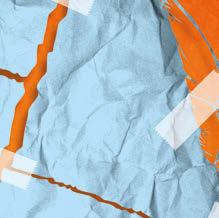
 By Sarah Jean
By Sarah Jean
Growing up, i was told jews do not get tattoos because they would mutilate the bodies given to us by God. With that principle came the concept of taking care of our bodies—taking care of the flesh that guards us and enables us to live. Yet something shifted as I got older. Instead of caring for the flesh of my soul, I rejected it. I hurt it.
God told Abraham that his descendants would be “as numerous as the stars in the sky.” In a twist of fate, I, Sarah, namesake of Abraham’s wife, fashioned stars into my body— literal stars cut into my flesh.
Anxiety has always been an issue for me, but as I entered middle and then high school, the anxiety intensified. The only thoughts I heard were ones of hate and self-contempt until self-harm became my way out. For years, I would lightly scratch myself and press my fingers into my skin to calm my mind and center my thoughts.
But one day, amid the pressures of high school, something switched. Hurting myself was no longer only an outlet for my emotional pain, but an attempt to remake my body into something I deemed acceptable.
I saw myself as a vessel, not a person, a brain to be used by people who called themselves my friends, but really just needed help with school assignments. At the same time, the attention of the boy I liked was determined
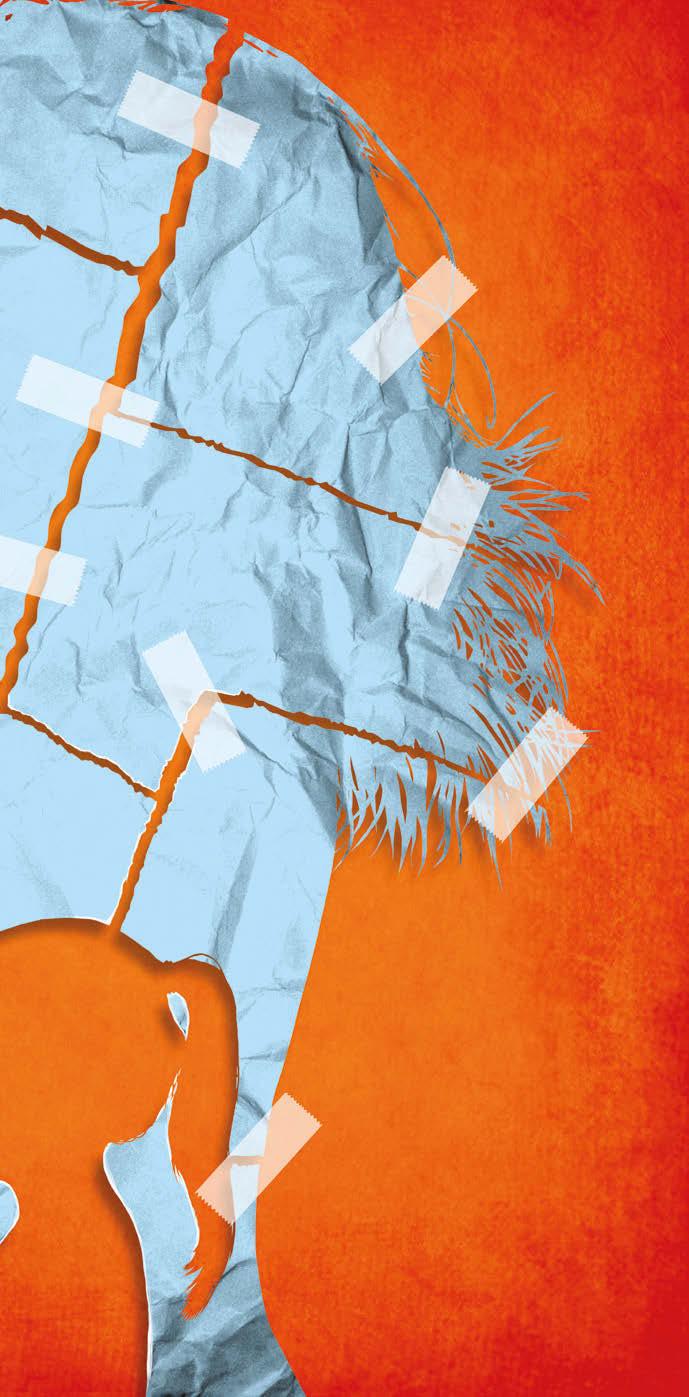
solely by what I was wearing each day—whether my cleavage was showing or if my pants were tight. I kept telling myself I needed to be smarter and prettier or else I’d be nothing.
I was drowning myself in selfcontempt and insecurities. Things got worse my sophomore year of high school. I encountered antisemitic comments that others would shrug off with, “It’s just a joke, lighten up.” Misogynistic comments and “compliments” from boys made me feel like an empty body. The anxiety of everyday life became too much to bear, so I fought myself more and more, cutting into my flesh with scissors.
A year without cutting has now passed, but the self-doubt continues.
I still scratch my skin when the anxiety takes hold. Even with the passage of time, I still do not understand why I hurt myself.
I tried therapy multiple times, but as much as I hoped for relief, it hasn’t yet helped me. The journey is long but there has been improvement. I can’t explain why I stopped cutting. Maybe it was being at a summer camp for three weeks where I had no opportunity to cut myself. Maybe it was finally opening up to friends and having their support. Maybe it was that my parents found out by accident after a doctor’s visit.
I may not have gotten a tattoo, but the stars I cut are just as permanent. These scars are the result of pain. But I cannot change the past, so instead, I look to it for strength.
I find my strength in Judaism and in remembering the little Jewish girl I once was: When I was 3, I loved each day of Jewish nursery school. When I was 8, I lit Sabbath candles at Hebrew school. When I was 13, I stood on the bimah as a bat mitzvah, holding in laughter as my family and
I still suffer; I still do not like the young woman I have become, but now, as a college student, I have taken a new approach to my mental health journey. Learning to love myself is a long process. Instead of hating my body, I do my best to feel neutral about it. If I go straight for a radical fix, I will fall short and turn against myself for even daring to try.
I’m not sure about the next step in my recovery, but the further I get from the experiences of my adolescence, and the longer I go without cutting, the more confident I feel in my ability to work through my pain.
I believe that someday I could be happy with myself—my body and my soul.
Sarah Jean, a freshman at the University of Florida from Long Island, N.Y., is the winner of the 2022 Hadassah Magazine and jGirls+ Magazine teen essay contest, which this year asked: Tell us a personal story about an issue that has affected your mental health. Her last name is being held for privacy. For a list of some resources for teens experiencing mental health issues, see page 35. For other teen essays on the subject, go to hadassahmagazine.org/health
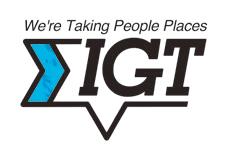
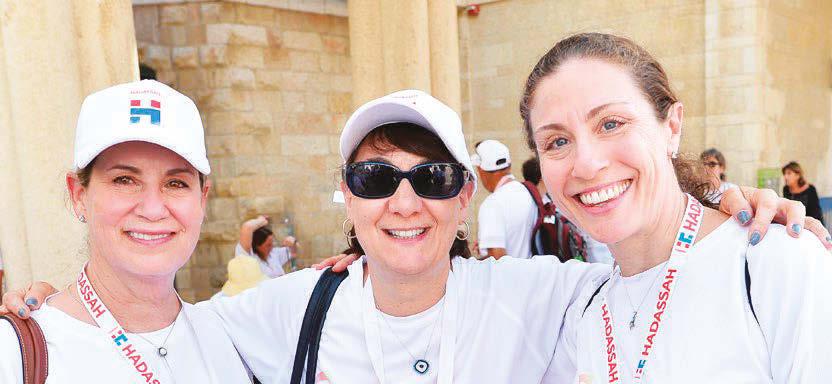
©2023 Hadassah, The Women’s Zionist Organization of America, Inc., Hadassah, the H logo, and Hadassah the Power of Women Who Do are registered trademarks of Hadassah, The Women’s Zionist Organization of America, Inc.



Her podcast and brand may be tagged “Moms Don’t Have Time to Read,” but Zibby Owens’s days are nevertheless filled with books. She reads while waiting for her children to return home from school and on weekend mornings, while the kids watch cartoons. She peruses books while leaning on the island in the blue-and-white kitchen of her airy Park Avenue triplex apartment in New York City, marking pages of interest as the domestic chaos of busy children swirls around her.
“I can read through noise. I can read, like, backwards on a plane. I can read anywhere,” Owens says with a laugh.
That’s a good thing for the legions of busy moms—along with dads, grandparents and plenty of others—looking for the curated book recommendations that have made a hit of Moms Don’t Have Time to Read Books, her seven-days-a-week podcast.
Episodes of the nearly five-yearold podcast, for which Owens has interviewed more than 1,200 authors—from relative unknowns to
recognizable names like actress and children’s book author Natalie Portman and fiction writers Jennifer Weiner and Caroline Leavitt—have been downloaded nearly 10 million times.
The award-winning podcast established the 46-year-old as a leading voice in the literary world. Indeed, she has been dubbed “NYC’s most powerful book-influencer” by New York magazine for her facility in bringing books and authors to new and larger audiences.
The podcast also forms the heart of the Zibby Media network, the burgeoning multimedia company Owens has built around a lifelong love of literature, packaged with a distinct and savvy focus on the bookish needs of busy women.
Since 2018, that empire has grown to include Zibby Mag, an online literary destination showcasing essays by favored writers—many of whom Owens champions during her appearances on Good Morning America, where she is a regular contributor. More recently, the Yale undergraduate and Harvard Business School graduate has launched her own publishing house, Zibby Books, with
By Hilary Danailovamonthly titles that are set to launch in February.
Slated for later in 2023 is her first brick-and-mortar independent bookshop, Zibby’s Bookstore, located in Santa Monica, Calif.

In addition to her media business, Owens has edited two best-selling essay anthologies, Moms Don’t Have Time To: A Quarantine Anthology and Moms Don’t Have Time to Have Kids. She also wrote the best-selling Bookends: A Memoir of Love, Loss, and Literature as well as a children’s book, Princess Charming, about a princess trying to find her perfect talent.

Currently, Owens is at work on her first novel, about a Los Angeles author with writer’s block, and a sequel to Princess Charming
Who else but a mom would be able to juggle all that? Indeed, it’s all the more remarkable considering that the energetic entrepreneur launched her literary empire less than a decade ago. At the time, knee-deep in childrearing, Owens was a sporadically published freelance writer of parenting essays. (Her children, from her first marriage to investment banker Andrew Right, are 15-year-old twins, a girl and a boy; a 9-year-old daughter; and an 8-yearold son.)
“My husband said, ‘You should really turn those essays into a book,’ ” Owens recalls, referring to her second husband, multimedia producer Kyle Owens. “I responded: ‘Moms don’t have time to read books,’ ” assuming her natural audience would be too consumed with mothering to read the essays.
From that flippant rejoinder came not only the podcast but also the titles for the two anthologies that followed. Published during the pandemic, both feature essays from authors who appeared on her podcast as well as by Owens herself. The pieces are organized into sections around the five things that the book maven frequently jokes that moms don’t have time to do: eat, breathe, work out, read and have sex. What busy parent—current or former— can’t relate?
That relatability is a key ingredient in Owens’s success. She even looks like your friend from, say, the library moms’ group, with preppy outfits paired with her signature wide smile and straight dirty-blond
hair parted to the side.
She has an approachability, a down-to-earth friendliness that’s impossible to fake, despite growing up in one of America’s wealthiest and most influential Jewish families. Her father is Stephen Schwarzman, CEO and co-founder of Blackstone, one of the world’s largest private investment firms.

“Zibby recognizes that she has power and connections, and she uses them for good,” says Leavitt, whose most recent novel, With or Without You, was featured by Owens on Good Morning America. The novelist was also interviewed on Owens’s podcast. “She makes other writers feel that she’s right down with all of us in the trenches.”
On her Instagram feed, she’s humble and effusive in her praise of friends and colleagues and frank about her struggles with everything from her weight to scheduling mammograms. (Though unlike most of us, she gets encouragement in the comments from supporters like Paulina Porizkova. Owens interviewed the onetime supermodel in December about Porizkova’s new book, No Filter: The Good, the Bad, and the Beautiful, an essay collection about her fashion career and complicated marriage to now-deceased Cars frontman Ric Ocasek.)
But Owens’s unprepossessing style belies an ambition to transform the publishing world on women’s
terms. The initial author cohort at Zibby Books happens to be all female, and Owens fosters what she hopes is a warm, nurturing culture that accommodates families and children.
“Zibby has cultivated a real community of primarily women within the company who are dedicated to discovering fun and collaborative ways to put good stories into the hands of readers,” says Sherri Puzey, Zibby Mag’s contributing editor and marketing manager for Zibby Books. “Zibby’s given all of us on her team a seat at the table, figuratively and literally—our current office is her dining room table!—welcoming ideas and offering opportunities to grow within and alongside the company.”
Continued on page 20

What makes a bookstore Jewish? Is it the pickles sold at Sweet Pickle Bookshop, on Man hattan’s Lower East Side, or the bat mitzvah photos that decorate the store’s walls? Is it the ease of stumbling upon a compelling read like The Last Kings of Shanghai , Jonathan Kaufman’s history of rivaling Persian Jewish families in China, which is a hit in the Judaica section of The Bookshop & Get Lit Wine Bar in Lenox, Mass.?
There are probably as many answers as there are Jewish-owned bookstores—themselves an unquantifiable subset of the approximately 2,500 independent bookstores in America. While many of these shops aren’t explicitly Jewish, their proprietors often connect their Jewish values with the bookseller’s mission of creating community around literature and ideas.
“Storytelling is ingrained in Jewish culture,” says Leigh Altshuler, owner of Sweet Pickle. “And so much of bookselling is telling the story of discovering books.”
With readings and other events, that communal role has become more important as bookstores settle into the digital era’s economically tenuous retail calculus. Roughly two-thirds of independent bookstores closed between 1990 and 2010, according to the American Booksellers Association, coinciding with the rise of the internet. Now their numbers are increasing, reversing that trend.
Today’s independents are less interested
in competing with online booksellers than in creating personal connections through social media and in-person gatherings. They’re also more likely to reflect the idiosyncrasies of owners and clientele. Sweet Pickle customers, for instance, delight in spotting the store’s branded merchandise on the streets of New York City: “Sarah Jessica Pickle!” wrote one fan on the store’s Instagram site, accompanying a shot of actress Sarah Jessica Parker strolling with a Sweet Pickle tote.
Some bookstores sell online, others don’t. “Amazon is useful if you’re looking for a specific title,” explains Israel Mizrahi, who owns Mizrahi Bookstore in Brooklyn. “Bookstores are the reverse: You want a person to recommend you something. It’s about relationships.”
Here, we provide a look at some of America’s most distinctive Jewish-owned bookstores:
Sweet Pickle Books, the two-year-old used bookshop on the Lower East Side’s Orchard Street that sells both books and pickles, has struck a chord among teenagers and young adults, who post TikTok and Instagram tributes to the quirky emporium, as well as the neighborhood’s Jewish old guard, who come in to barter books and tchotchkes for jars of pickles.

Some of those tchotchkes are for sale. Others that have become favorites of Altshuler are not, such as the disco ball hanging from the ceiling and a vintage VHS copy of Crossing Delancey .
“I love the symbiotic relationship between people who buy and sell used books—how they reflect the interests of a community,” says Altshuler, who features a large selection of Jewish-themed books.
What shoppers discover in Sweet Pickle is an eclectic selection of classics and popular fiction and nonfiction, lots of it kitschy and decidedly vintage— Seinfood: A Food Book About Nothing
by TV Dinner Publications, or Myron Kosloff’s 1964 Dial “P” for Pleasure .
And then there are the pickles. Altshuler knew she wanted to sell something alongside books, and pickles seemed like an obvious homage to the storied Jewish neighborhood. Jars of her proprietary blends decorate the store’s bookshelves, alongside T-shirts with cheeky slogans like “Eat More Pickles.”

Sweet Pickle’s success vindicates Altshuler’s millennial-girl “chutzpah”—her word—in a business historically dominated by men.
“There’s a generation of young women who are opening bookstores today,” she says. “And we’re altering that pinky-up, capital-L literary snobbiness of the traditional bookstore.”
“A bookstore has a crucial place in democracy,” observes Ellen Trachtenberg, who opened Narberth Bookshop in the Philadelphia Main Line suburb days before Election Day in 2016. “It’s a place to share ideas.”

Her vision was validated in the weeks after the election, when Philadelphia-area liberals, disheartened by the results, poured into her general-interest bookstore to commiserate and recommend progressive titles to each other.
The small bookstore, less than 1,000 square feet, has been a hub of local intellectual life ever since. Murals cover the walls with outdoor images or slogans like “A community of readers, writers, and lifelong learners.” Trachtenberg’s
The Lower East Side bookstore’s quirky vibe appeals to both teens and the Jewish old guard. Ellen Trachtenberg of Narberth Bookshop Pickles, kitsch and books at Sweet Pickleselection of books invites conversations over fiction best-sellers like Dani Shapiro’s Signal Fires as well as nonfiction books that explore heavier content.
“This is a place where we can talk about racism, about antisemitism,” Trachtenberg says.
Narberth is also deeply intertwined with the area’s sizable Jewish community—partnering with a book club at the Adath Israel congregation in Merion Station and participating in a cookbook event with the James Beard Award-winning, Israeli-born chef Alon Shaya.
Trachtenberg credits her Jewish values with sparking her vocation as well as “the Jewish emphasis on social responsibility and thinking critically about issues.”
LOS
“Books belong in a Jewish home,” affirms Leah Koch, who with her sister, Bea, owns the Los Angeles romance-focused bookstore The Ripped Bodice. Indeed, a section of the bright and enticing store looks like a living room, complete with shabby chic sofas and love seat.

For the Koches, bookselling fulfills a larger mission to promote diversity. While the sixyear-old store’s white shelves are stacked with every type of romance book possible, from Regency (Julia Quinn’s “Bridgerton” series is a favorite) to erotica, the sisters deliberately showcase Jewish, LGBTQ and non-white storylines and authors, all of which are underrepresented in the romance genre.
Toward December, rather than putting up tinsel, the owners mounted a riotous blue-andwhite Hanukkah display in the shop windows. Angelenos cruising by the pink Culver City storefront couldn’t miss the oversized dreidels, menorahs and posters of Jewish-themed books like Jean Meltzer’s The Matzah Ball
With a simple paper sign taped inside the glass door, you’d struggle to notice the Mizrahi Bookstore on its nondescript block in the Marine Park area of Brooklyn. Most people shop by appointment—a necessity, considering the difficulty in squeezing into the threefloor labyrinth of books and papers; around a half-million used, rare and antiquarian titles are crammed into every available square inch. Turn one corner and there are stacks of Hebrew seforim , another and you’ll find novels in Yiddish, a third and you may encounter a pile of sheet music—cantorial compositions next to a musical piece commemorating the 1911 fire at the Triangle Shirtwaist Factory in Manhattan.
“You definitely can’t do a hora in here,” quips owner Israel Mizrahi, who transacts much of his business online (400 customers, from Syrian rabbis to secular Yiddishists, check his eBay site daily, he says).
Growing up in an observant Sephardi family in Brooklyn, Mizrahi would skip school to go to the local library. He started collecting Jewish books until he had amassed enough to open a store—so that’s what he did.
“Books either sell in 24 hours or can take 15 years,” he says. “It’s like a lottery. You never know what a customer’s going to come in for. There’s that thrill of selling just one more book.”
When The Bookstore & Get Lit Wine Bar faced insolvency during the pandemic, a GoFundMe campaign raised over
$100,000 from both locals and visitors to the Berkshires to keep Matt Tannenbaum’s shop in business. (Hardly surprising, considering the consistently positive reviews the store gets: “Amazing little bookstore. Impeccably curated. Snagged a couple of authors that are harder to find in NYC,” wrote one Google reviewer.) The outpouring, which inspired Tannenbaum’s documentary film, Hello, Bookstore , affirmed his conviction that independent bookstores are community fixtures.
“I’ve learned so much from my customers,” says Tannenbaum, who moved to Lenox in the early 1970s and bought the store in 1976. “I tell people about our books, and they tell me about their lives.”

From the substantial Judaica section, he’ll recommend books like the dishy The Netanyahus by Joshua Cohen, winner of the 2022 Pulitzer Prize for Fiction, or one of his favorites, a volume on 20th-century Jewish radicals in London’s East End.
Tannenbaum, a self-described schmoozer, set aside a corner of the store several years ago to create a wine bar to help lubricate discussions around books. “I love to have a glass of wine, make a few dollars and tell a story,” he says.
“I’ll say, ‘Have you read this book?’ Ten times out of nine, they’ll buy the book.”
 —Hilary Danailova
COURTESY OF LEAH AND BEA KOCH (TOP); FROM ‘HELLO, BOOKSTORE’/COURTESY OF GREENWICH ENTERTAINMENT
Sisters Leah (left) and Bea Koch co-own The Ripped Bodice in Los Angeles, a bright, inviting store stacked with every type of romance book possible.
Matt Tannenbaum, owner of The Bookstore & Get Lit Wine Bar
—Hilary Danailova
COURTESY OF LEAH AND BEA KOCH (TOP); FROM ‘HELLO, BOOKSTORE’/COURTESY OF GREENWICH ENTERTAINMENT
Sisters Leah (left) and Bea Koch co-own The Ripped Bodice in Los Angeles, a bright, inviting store stacked with every type of romance book possible.
Matt Tannenbaum, owner of The Bookstore & Get Lit Wine Bar
In addition to its communal ethos, Zibby Books is upending bookselling norms. The publishing house plans to issue one title a month and lavish equal resources on all its authors—unlike most publishers, who reserve the lion’s share of promotion for literary stars and best sellers.
At a November media launch for Owens’s newest projects, the female energy was palpable and joyous as sunlight streamed through the windows of her apartment.
Seated in front of the large fireplace in her family room, the hostess beamed as “her” authors took turns Zooming in to present their books. Among them was Alisha Fernandez Miranda, who joined from her home in Scotland. Her memoir, My What If Year: Four Internships, Three Countries, Two Kids and One Life-Changing Misadventure—a book that the author has jokingly called a “coming-of-middleage story”—is the publishing house’s inaugural release.
As Miranda and her fellow authors presented their titles, a small, in-person mix of book industry people and press chatted and lunched on sandwiches, fried chicken and that New York Jewish classic, black-andwhite cookies.
“We’re just moving and shaking over here,” Owens enthused, smiling warmly to her audience.
Then she surprised everyone by announcing the planned 2023 opening of Zibby’s Bookshop in Santa Monica, sharing architectural images and sketches of the indie bookstore. It will be “curating in a whole new way,” she said—categorizing books by topic rather than genre, creating author-recommended sections and, naturally, showcasing Zibby Books titles.
A bookstore may feel old school in an Amazon-dom inated world, but Owens is a book influencer for a generation that moves seamlessly between the printed page and e-readers, podcasts, blogs and social media.
“People love to connect over books,” Owens muses of the myriad ways readers interact with each other through literature.
Readerly kinship, after all, is at the heart of Moms Don’t Have Time to Read Books. Over and over, authors interviewed for this article said that talking to Owens feels like chatting with a good friend.

In an interview with Tony Awardwinning Broadway star Idina Menzel and her sister, teacher Cara Mentzel, the three Jewish women bonded over shared camp experiences and sibling dynamics while discussing Loud Mouse, a children’s book the sisters co-wrote about a mouse whose singing causes her to change size. When Menzel told Owens she wanted to foster conversations about talent, navigating fame and wanting “to be seen and heard” from a young age, Owens played a short clip of a song her 9-year-old had created for the book. “She’s got such a vibe already!” Menzel observed.
In another recent episode, Owens showcased an unusual Holocaust story when she interviewed author
Michael Frank about his One Hundred Saturdays: Stella Levi and the Search for a Lost World Frank described his weekly meetings with Levi, who grew up in the little-known prewar Jewish community on the island of Rhodes before being deported to Auschwitz.
Listening to the breezy ease of these interviews and others, it’s hard to believe that Owens had never actually listened to a podcast before launching her own in 2018. “Originally, it was going to be me reading book excerpts for busy people. But I found out that was illegal,” Owens recounts. She decided to interview authors instead, “and I loved it.”
Owens is a stalwart fan of Jewish writers. She mentions Dani Shapiro, a longtime friend, and romance novelist Jean Meltzer as favorites, and she has been a judge for the National Jewish Book Awards. But she’s littlec-catholic when selecting authors and genres for her podcast, which features novels, memoirs, picture books, self-help titles and even cookbooks. “I like to mix it up with people of different cultures, races, religions, sexualities. I want to talk to everyone,” Owens says.
Listeners are equally enthusiastic.
“I felt like my new friend Zibby was introducing me to all these authors, and they became my cheerleaders,” says Sagit Schwartz, a

‘PEOPLE
Los Angeles therapist who became hooked on the podcast while working on her first novel, Bean. Due out in 2024 from Alcove Press, Bean is a thriller whose protagonist is a Jewish woman suffering from an eating disorder. “I really credit them with helping me get to the finish line of my book.”
Discovering the role she’d unwittingly played in helping Schwartz to finish Bean, Owens then featured an essay by the author on her Zibby Mag website.
Books have been a consuming passion for Owens since a childhood that, for all its privilege, had its share of darkness. As Owens explains in her memoir Bookends—which focuses on her early years, the death of a friend on 9/11 and falling in love with her second husband—classics like Charlotte’s Web and Little Women served as emotional refuge from the trauma of her parents’ divorce when she was 9.
Later, Anita Diamant’s The Red Tent and Tuesdays with Morrie by Mitch Albom (she has interviewed both authors for her podcast) sustained the then-20-something Owens through the loss of her college roommate and best friend, Stacey Sanders, in the World Trade Center attack, the tragedy that ultimately motivated Owens to pen Bookends, published last summer.
Soon to join the ranks of the novelists she promotes—her first novel, which does not yet have a title, is due out next year—Owens has redoubled her focus on championing authors. Pamela Redmond, who has three novels forthcoming from Zibby Books, praises the way Owens treats her authors as collaborators rather than commodities.
“I worked at Condé Nast for many years, and there are a lot of advantages to that,” reflects Redmond, a former columnist at Glamour Magazine who has published more than 20 novels, memoirs and nonfiction works with large publishing houses and has experienced the greater resources these companies can put behind a book. “But inevitably, the book is a product.”
In contrast, Zibby Books “is a totally different experience,” says Redmond. “Zibby’s big vision is that there should be more community— between authors, publishers, readers. It’s an entrepreneurial spirit based on relationships.”
It’s likely that Owens can realize this vision because Zibby Media is a privately held company and not answerable to shareholders. But Leavitt, the Jewish novelist whose works Owens has supported, sees Jewish values at play, too.
“In Jewish culture, you’re supposed to take care of others in the community. And that’s what she does,” Leavitt says about the way that Owens fosters writers and readers.
Owens’s strong Jewish connections date to her childhood on Manhattan’s Upper East Side. Her family belonged to Temple Emanu-El, the landmark Reform synagogue, and her recollections of the Jewish holidays and Hebrew school amid a 1980s upbringing are broadly relatable. “My mother was on the lookout for High Holiday outfits for me for, like, the entire year,” Owens says with a laugh.

Her first husband, Right, is Jewish; her second, Kyle Owens, is Italian-
American and chose to convert to Judaism from Catholicism before the two wed in 2017.
Inevitably, as technology has changed the book industry and paved the way for the Zibby Media literary empire, it has also changed books themselves. Authors are trying new formats, like shortform pieces and Audible Originals— audio-first works written directly for that market.
And then there is social media, which she praises for making literature more accessible.
“You can go on Instagram, DM [direct message] the authors and get feedback right away,” says Owens, who fastidiously responds to online queries.
The downside, she acknowledges, is that the sound-bite world of social media has shortened attention spans.
“When I try to read literary fiction with very long chapters, I get discouraged before I even start,” she confesses. While writing Bookends, “I made sure to keep every chapter short. I’d have a really punchy first and last sentence to keep people’s interest.”
As her audience and media company continue to expand, it’s clear that Owens is keeping readers’ interest. And every day, the community she has created around good books eagerly awaits her next chapter.
Hilary Danailova writes about travel, culture, politics and lifestyle for numerous publications.
Perhaps it was bashert that the taxi driver who drove me to the airport as I was leaving Israel following Hadassah’s 100th National Convention in Jerusalem in mid-November was a man who was only too familiar with Hadassah Hospital and what he termed its “avodat kodesh,” or holy work.
David Nissim’s stepdaughter, Adi Hooja, was critically injured during a deadly suicide bombing in the center of Jerusalem in December 2001. She was 11 years old at the time. A medi-
cal team at Hadassah not only saved her life but also her leg, which was filled with shrapnel.
More than 20 years and many operations later, including one as recently as November, Hooja is walking, leading a relatively normal life and continuing to receive treatment at the hospital. Her stepfather said his family is “more than grateful” for all that Hadassah and her doctors have done for her.
Indeed, the healing work of Hadassah, the Women’s Zionist Organi-
zation of America, and the Hadassah Medical Organization was on full display throughout the four official days of the convention—“Together in Israel: Our Pride. Our Purpose.”—as well as during the wide array of preand post-convention programming.


It was on display at the numerous gatherings where doctors, nurses and their patients recounted poignant and often miraculous journeys from illness and injury to treatment and recovery.
It was on display at the Jerusalem
‘THIS IS WHAT MAKES US HADASSAH’
Theater during the convention’s opening Hadassah Pride program when Alexander “Sasha” Buzunar was surprised with a dramatic re‑ union with his mother. The 14 year old teenager from the Russian captured Ukrainian port city of Mari upol had found refuge from the war at Hadassah Neurim, a Hadassah supported youth village, and hadn’t seen his mom, Alina, in eight months.
It was on display at Hadassah Ein Kerem and Hadassah Mount Scopus, HMO’s two hospital campuses in Jerusalem that attendees visited to witness firsthand the innovative med ical technology and pioneering work being done.
And it was on display among the more than 350 leaders, members,
associates and staff from every corner of the United States who reveled— with dancing, singing and lots of schmoozing—in the opportunity to physically come together after nearly three years of a pandemic that had relegated most Hadassah activities to Zoom.



“This has been my dream since the day I accepted the presidency,” Rhoda Smolow, Hadassah’s national president, told the participants at the welcome dinner on November 14. “We needed to do this. We needed to be together. We needed for you to take that first step out the door, on the plane, on the tarmac and in Israel. This is what makes us Hadassah.”
What makes Hadassah is recog‑ nized by all kinds of Israelis. Hadas sah Hospital “represents much more than a medical institution,” declared Nachman Shai, who was concluding his tenure as head of Israel’s Ministry of Diaspora Affairs when he spoke at the opening program.
“It is an establishment with the goal of healing a nation, one that has a close connection to all of our hearts,” Shai said. “It has remained
a cornerstone of Jerusalem from before the establishment of the State of Israel until this day. I owe you all a personal thank you for this tremen dous contribution.”
Tom Nides, the United States ambassador to Israel, whose mother was an active Hadassah leader in his hometown of Duluth, Minn., recounted his personal experience at Ein Kerem during the Hadassah Honors
 event that bestowed the Henrietta Szold Award upon past Na‑ tional President Marlene Post and the
Delegates gathered at Jerusalem’s Haas Promenade to open the festivities. Lifting the challahs are (from left) former Hadassah National President Nancy Falchuk, CEO Naomi Adler, current President Rhoda Smolow and Convention Chair Joyce Rabin.
Spirits were high at the convention’s farewell celebration, with (from left) Michelle Elisburg, Joyce Backman, Leslie Gonzalez, Luisa Narins and Linda Freedman Block joining the dance party.
event that bestowed the Henrietta Szold Award upon past Na‑ tional President Marlene Post and the
Delegates gathered at Jerusalem’s Haas Promenade to open the festivities. Lifting the challahs are (from left) former Hadassah National President Nancy Falchuk, CEO Naomi Adler, current President Rhoda Smolow and Convention Chair Joyce Rabin.
Spirits were high at the convention’s farewell celebration, with (from left) Michelle Elisburg, Joyce Backman, Leslie Gonzalez, Luisa Narins and Linda Freedman Block joining the dance party.
inaugural Power of Esther Award to Israel’s first lady, Michal Herzog.

When he felt sick just a day ear lier, Nides told the crowd, he called Dalia Itzik, chair of the board of HMO. Before he knew it, he was at the emergency room of the hospital getting the royal treatment for what turned out to be just a cold.
What follows are some snippets and scenes from the convention. For more coverage, including videos and a photo gallery, go to hadassah.org/ 100convention.
Dr. sagui gavri, head of pedi‑ atric cardiology at Hadassah Ein Kerem, was in the cath lab treating a Palestinian child from East Jerusalem in May 2021 when the red alert on his phone went off, signaling incoming rockets from the Gaza Strip. Hours later, he got word that his home on Kibbutz Nir Am, which borders Gaza, was hit, destroy ing the roof and surrounding fields.
That didn’t stop his work then, or now, as his commitment to treating Palestinian children remains unwav
ering. More than 200 from the Gaza Strip have been treated over the past 15 years, he said.
He has a special relationship with one of those children, Fayez Ha‑ sheem, who almost died three times in his short lifetime, Dr. Gavri said, “and we pulled him out of death every time in the last minute.”
For Fayez, Dr. Gavri is like a father. “He treats me like I’m his son,” said the adolescent, who took the stage at the convention with his mother and sister.
His mother, Layali Hasheem, still gets emotional when she talks about
Sasha Buzunar enjoyed a tearful—and surprise— reunion with his mother, Alina, on the convention stage. The 14-year-old, who found refuge from his war-torn city of Mariupol at Hadassah Neurim, recounted his frightening experience watching burning buildings, leaving his home and getting on a plane to Israel with just a quick ‘goodbye’ to his mother. Soon after arriving at the youth aliyah village, he said, he ‘understood that here is a place for me. I have anything that I need. Now I feel free.’

their experiences at Hadassah. “When I’m in Hadassah, I feel like I’m in my home with my family,” she said.

Dr. Gavri said he is not naive, but he is hopeful that these interethnic interactions and relationships formed at Hadassah Hospital are “seeds that can make a change—maybe.”
 Israeli singer Idit Halevy (far right) took the stage with a group of girls from the Neve Oz Choir to help tell the story of Hadassah.
Dr. Sagui Gavri spoke about his special relationship with Fayez Hasheem and his family.
Israeli singer Idit Halevy (far right) took the stage with a group of girls from the Neve Oz Choir to help tell the story of Hadassah.
Dr. Sagui Gavri spoke about his special relationship with Fayez Hasheem and his family.
Marlene post has been a powerful force in the Jewish world for decades, but nowhere has her impact—and her commitment—been greater than at Hadassah. The organization showed its appreciation for her half-century of service by honoring her with its highest honor, the Henrietta Szold Award, at the convention.


At a festive evening at the Waldorf Astoria Jerusalem that included musical performances as well as an act from world-renowned Israeli mentalist Lior Suchard and dancing in the aisles, some 500 people gathered to honor both Post and Michal Herzog, Israel’s first lady, who received Hadassah’s inaugural Power of Esther Award.
Herzog, an attorney, was recognized as “a role model for women in Israel and abroad, an advocate for those in need and a champion of social mobility,” as denoted on the award itself.
Accepting the award, Herzog likened Queen Esther’s “soft power”—her use of wisdom and persuasion rather than coercion—to effect change to her own efforts as partner to her husband, Israeli President Isaac Herzog.
“Soft power is perhaps the central tool available to first ladies,” she said. “For me, it has become the best instrument for promoting the causes dear to my heart, such as awareness for mental health; social mobility and equality; psychological humanitarian support.”
She also congratulated Post, as did her husband in his video remarks
a day earlier when he welcomed the convention participants and noted that so many of Hadassah’s contributions “are a seamless part of this country and its story.”

Noting his admiration for Szold, Hadassah’s founder, and the organization’s motto, “The Power of Women Who Do,” the president lauded the past national president and current chair of Hadassah Magazine. Post is “by definition a woman who did and does, and will do,” he said.
Ellen Hershkin, a past national president, presented the award to
Post, who was honored “for her extraordinary service, lasting contributions to the ideals of Zionism, Israel and the Jewish people worldwide.” She “empowers emerging generations of leaders,” the award continues, and “embodies the spirit of innovation, global perspective and courage to create a more just and equitable world.”
Among the many achievements under her presidency from 1995 to 1999, Post, a former nurse and nurse educator, opened the first Hadassah office in Washington, D.C., and launched the Hadassah Foundation, which funds programs to benefit women and girls in Israel and the United States.
In her acceptance speech, Post noted her beginnings in the Catskills town of Monticello, N.Y., where she was born 85 years ago, and credited Hadassah, which “made me who I am in many, many, many ways.”
Ambassador Tom Nides told the crowd, ‘One of the greatest honors anyone can possibly have is to be the American ambassador to Israel. Without question, America has got Israel’s back.’
In addition to her involvement in Hadassah, Post has held many lay positions elsewhere in the Jewish world, including founding chair of the Birthright Israel program and founding chair for the American Friends of the Israel Sport Center for the Disabled. She continues to hold leadership positions with numerous organizations, among them the Jewish Agency for Israel and the Jewish National Fund.
Marlene Post, past national president of Hadassah, accepted the Henrietta Szold Award, saying, ‘Hadassah made me who I am.’ Also being honored was Israel’s First Lady Michal Herzog (left), who received the Power of Esther Award from National President Rhoda Smolow.Convention participants spread out across jerusalem and the country for all kinds of excursions, from culinary tours of Mahane Yehuda to a military briefing along part of Israel’s security barrier. And of course, to Hadassah Hospital’s two campuses and to Meir Shfeyah, one of two Youth Aliyah villages supported by Hadassah.


At Hadassah Ein Kerem, major donors to the Round Building were honored at a ceremony beneath the Chagall Windows of the Abell synagogue. Delegates had the opportunity to don hard hats and tour the construction site. Once the renovation is complete, it will house several key hospital departments as well as updated operating rooms, and it will increase by 200 the number of patient beds available.


Dr. Yoram Weiss, HMO’s director general, noted among its many recent accomplishments that Hadassah was in the forefront of Covid treatment and was the first Israeli hospital to send medical teams to the Polish border with Ukraine to assist those fleeing the war, treating 35,000 patients.

 Rhoda Smolow cut the ribbon on the plaque honoring top donors to the Round Building. Smolow with (from left) Hadassah CEO Naomi Adler, HMO Director General Dr. Yoram Weiss and Convention Chair Joyce Rabin.
Dianne Gottlieb, HMO chair and herself a midwife and nurse educator, spoke at the dedication of the Learning Center at the Goldwurm Auditorium at the Henrietta Szold Hadassah-Hebrew University School of Nursing.
A pre-convention trip for associates and their guests included a comprehensive tour of Hadassah Ein Kerem and its state-of-the-art facilities.
Rhoda Smolow cut the ribbon on the plaque honoring top donors to the Round Building. Smolow with (from left) Hadassah CEO Naomi Adler, HMO Director General Dr. Yoram Weiss and Convention Chair Joyce Rabin.
Dianne Gottlieb, HMO chair and herself a midwife and nurse educator, spoke at the dedication of the Learning Center at the Goldwurm Auditorium at the Henrietta Szold Hadassah-Hebrew University School of Nursing.
A pre-convention trip for associates and their guests included a comprehensive tour of Hadassah Ein Kerem and its state-of-the-art facilities.
Karen
Hadassah International, brought together 40 staff and volunteer leaders from around the world, including South and Central America, Canada, Europe and Australia for a meeting that focused on building a global team for developing major fundraising for HMO. As the international arm of HWZOA, focused outside the United States, it plays a key role in funding HMO capital projects and medical research and also facilitates strategic collaborations to bring HMO expertise to other parts of the world.


You love Israel. You love Hadassah. And you love how Hadassah helps Israel. That’s why we need you!


Help us strengthen Hadassah across the world— and make an even greater impact. Please take 10 minutes to share your opinions in this simple survey: surveymonkey.com/r/HWZOA_Ops1 . Thank you for all you’ve done and will do for Hadassah. With this survey, you’re helping advance Hadassah’s legacy in the months and years ahead.
 Convention-goers on the Meir Shfeyah track enjoyed a concert by the village’s mandolin orchestra.
At Meir Shfeyah Youth Aliyah Village, associate and longtime Hadassah supporter Burt Krull met with a teacher and her students (left) in a learning center made possible by his donation, at the request of his late wife, Alma, in honor of three Hadassah legends (above, from left): Barbara Sofer, Audrey Shimron and Barbara “BG” Goldstein. Shimron, who has stepped down from her longtime position as executive director of HWZOA’s Israel Offices, was honored at a special ceremony during the convention. Shimron now holds the title of executive director emeritus. Suzanne Patt Benvenisti is the new executive director.
Convention-goers on the Meir Shfeyah track enjoyed a concert by the village’s mandolin orchestra.
At Meir Shfeyah Youth Aliyah Village, associate and longtime Hadassah supporter Burt Krull met with a teacher and her students (left) in a learning center made possible by his donation, at the request of his late wife, Alma, in honor of three Hadassah legends (above, from left): Barbara Sofer, Audrey Shimron and Barbara “BG” Goldstein. Shimron, who has stepped down from her longtime position as executive director of HWZOA’s Israel Offices, was honored at a special ceremony during the convention. Shimron now holds the title of executive director emeritus. Suzanne Patt Benvenisti is the new executive director.
For some of its 350-plus attendees, Hadassah’s 100th National Convention was a family affair. Several mothers and
daughters came to Jerusalem together, as did at least one father-son pair. In many cases, Hadassah volunteering, leadership and philanthropy are

Akerman and Rory McEvoy are proud to support Hadassah for more than 20 years and join in celebrating Hadassah’s wonderful milestone.
Rory J. McEvoy New York rory.mcevoy@akerman.com
700+ Lawyers, 24 Oices akerman.com ©2022 Akerman LLP. All rights reserved.
family traditions.
Take Kimi and Miki Schulman. Kimi Schulman has been to many Hadassah conventions, including when she held leadership positions in the Florida Atlantic and New York regions. This time she came as national liaison for Evolve Hadassah, which was created to attract younger women to the organization.

One important generational shift, she said, is that younger leaders such as herself—an operations manager at a high-end furniture company in Boca Raton, Fla.—are more likely to work full time than their Hadassah elders, but they’re just as eager to be part of something bigger.
Despite her focus on her Evolve role, Schulman said that her most powerful moment at the convention was one shared with her mother, Miki, the chair of 360° of Healing, The Full Circle Campaign and a longtime national Hadassah leader.
“At the pre-convention trip for the Society of Major Donors, my mother dedicated a special gift that our family has made in my father’s memory,” said Kimi Schulman, who herself has made repeat Founders-level donations. “L’dor v’dor, from generation to generation. My parents always instilled in me and my brothers…the importance of tzedakah.”
For one Hadassah mother, bringing three of her four adult daughters

was extremely meaningful. “We’re happy to be here celebrating Hadassah’s 100th Convention,” said Hindea Marcowicz of Toledo, Ohio, a former longtime chapter president.
“Hadassah is a part of who we are as a family,” said Nina Friedman, one of Marcowicz’s daughters, who is a social worker and currently the membership vice president for Hadassah Chicago-North Shore.
Attending this convention together, said Friedman, was “a way for us to honor our mother for her dedication and commitment to Hadassah over the years, and remember our grandmother.” Visiting Hadassah’s hospitals and the Meir Shfeyah Youth Aliyah Village, she said, helped “remind us what we are working for.” —Erica Brody
The Hadassah Educators Council welcomes all those who interact with students of all ages and at any level and in any educational environment.
The role of an educator is challenging and changing, and we need to work together to address the difficult issues we encounter. Education can improve lives, change communities and create enlightened citizens of the world. Our programming will support educators with the tools and information needed to achieve these ideals, focusing on antisemitism, Holocaust education, Zionism, Israel, advocacy, mentoring and networking, among other topics.
There is strength in numbers. We educators can make a difference in advocating for issues locally and nationally, for Holocaust education in all 50 states and for balanced and inclusive curricula related to Jewish issues, Israel and Zionism.
Last summer, we made our voices heard at the National Educators Association regarding pro-Palestinian new business items. We wrote an op-ed piece that was published and shared by the Jewish News Syndicate and StandWithUs.
Let’s keep the momentum going. Mark your calendars for these upcoming online events: January 31, for Hadassah Loves Educators: Inaugural Celebration of Our New Educators Council; and May 2, for a program focused on the American and Israeli educational systems. An advocacy workshop is being planned for summer 2023.
Learn more, including how to join, by emailing educatorscouncil@hadassah.org
—Gail Hammerman and Karen Bloom, Educators Council Co-Chairs
KPMG is proud to support Hadassah, The Women’s Zionist Organization of America, Inc.’s important work to bring healing where it is needed most... in the US, Israel and around the world. Congratulations on your 100th convention! Your commitment, determination and insight will have a powerful impact for years to come.


kpmg.com/us
© 2022 KPMG LLP, a Delaware limited liability partnership and a member firm of the KPMG global organization of independent member firms affiliated with KPMG International Limited, a private English company limited by guarantee. NDP400962-1A

Proud supporter of those who reach higher
Rosalyn schofield would have dismissed the dull, intermittent ache between her hips had she not been leaving on a long-awaited trip to the Galapagos Islands. “I didn’t want to find myself sick out there,” said the 59-yearold attorney, “so I got checked—and learned I had ovarian cancer.”
Dr. Rivka Brooks, 52, was hiking in Georgia’s Caucasus Mountains when she got her period. Noting that it was different than usual, she was immediately suspicious.

“I’m not hysterical, but I think I’ve got cancer,” she messaged her Hadassah Medical Organization colleague and friend, Dr. Drorit Hochner, who heads the obstetrics and gynecology department at Hadassah Hospital Mount Scopus.
Both women are alive and cancerfree today because the disease, known for its stealthy arrival, gave them warning.
“Ovarian cancer is usually asymptomatic and goes undetected until disease is advanced,” said HMO gynecologist-oncologist Dr. Tamar Perri. “Discovered in its early stages, before it spreads, its cure rate is 95 percent. After it metastasizes, however, it turns into what was, until recently, a death sentence.”
Dr. Perri is an expert in gynecological cancers. She came to Hadassah in January 2021 to establish and run the Gynecologic Oncology Center. A facility within the Patricia and Russell Fleischman Center for Women’s Health at Hadassah Ein Kerem, the oncology center brings under one
roof the treatment and follow-up of gynecological cancers—ovarian, cervical, uterine and vaginal—along with that of endometriosis, fibroids, pelvic masses and more. This approach enables swift management of conditions in which timing is often critical.
“I got back to Israel on a Friday in late June 2021 and saw Dr. Hochner on Sunday,” said the British-born Dr. Brooks, who has lived in Israel since age 3. Today, she heads the pediatrics department at Hadassah Mount Scopus. “She referred me to Dr. Perri, who diagnosed me on Tuesday. I was in surgery by Thursday and started chemotherapy two weeks later.”
Drs. Brooks and Perri discussed their patient-doctor link as well as their practices at a dinner for major donors at Hadassah’s 100th Convention in Jerusalem in November.
For most ovarian cancer patients, unfortunately, their diagnosis is not as simple as that of Dr. Brooks. One 34-year-old woman who prefers to remain anonymous experienced coughing, fever and shortness of breath that repeatedly sent her to the emergency room just as Covid-19 was tightening its grip in 2020. Testing negative for coronavirus each time—the medical staff thought she had a different virus—she would return home, only for the symptoms to persist.
She was eventually diagnosed with malignant pleural effusion, a build-up of excess fluid between the cushioning layers of pleura around her lungs.
“This often indicates advanced ovarian cancer,” said Dr. Perri. “Almost half the women who die from the disease have pleural metastases.”
In 2021, the woman became the first patient to be treated in the newly opened Gynecologic Oncology Center. Because her ovarian cancer had reached stage 4, she received three cycles of neoadjuvant chemotherapy to shrink her tumors so that eventual surgery would be less invasive and more effective. More chemotherapy followed the surgery, and the woman is now in remission.
While chemotherapy is not easy for anyone, the recent experience of a 43-year-old woman who struggled with infertility (she also prefers to remain anonymous) had an added dimension of concern.
“She had been in fertility treatment for eight years at the time of her diagnosis,” said Dr. Perri. “A scan seven weeks after her latest in vitro fertilization cycle finally showed a fetus—but also particularly aggressive stage 4 ovarian cancer.”
Although the cancer did not affect the growing fetus, the woman’s survival was at risk. Her medical team advised terminating the pregnancy and immediately treating the cancer. The woman, however, refused to terminate.
“She began chemotherapy at 13 weeks’ gestation, when risk of miscarriage or serious deformities to the
fetus drops, although it doesn’t dis appear,” said Dr. Perri. While she suffered some of the usual side effects of chemo—loss of appetite, nausea, vomiting, low blood count, bruis ing and infections—“the pregnancy held,” Dr. Perri recounted.
At 33 weeks, a healthy little girl was delivered by Cesarean section.
“The new mother heard her daughter cry and stroked her head,” Dr. Perri recalled. “Then we admin istered a full anesthetic and removed her ovaries and uterus.”
Dr. brooks and schofield, and the two other women described, all carry a muta tion of the BRCA gene, the only proven risk factor for ovarian cancer. Those with mutations of the BRCA1 or BRCA2 genes have about a 70 percent chance of developing breast cancer and a 44 percent chance of ovarian cancer by the age of 80, ac‑ cording to the United States’ Nation‑ al Cancer Institute.
Schofield, whose mother and grandmother died from breast cancer at relatively young ages, knew there was a strong possibility of the muta tion in her family, “but, I’m ashamed to say, I was too afraid to test.”
The other three, however, were astonished to learn they carried the
In the general population, where the prevalence of a BRCA mutation is 0.24 percent, ovarian cancer affects one in 78—making it the fifth deadli est malignancy in women.
“BRCA’s incidence in Ashkenazi Jewish women, however, leaps to 2.5 percent, meaning it’s carried by one in every 40,” explained Dr. Perri. “So the message is: If you’re Ashkenazi and toward your 40s, test for BRCA.”
Because of these genetic realities, Israel proportionally has one of the world’s largest populations of women with ovarian cancer, making the country a testing ground for diag nostic and therapeutic trials. One life saving development already in wide use is BRCA inhibitors, a class of cancer fighting drugs.
“BRCA1 and BRCA2 genes help healthy cells repair themselves,” said Dr. Perri. “When there’s a fault in one or both these genes, this ability is damaged and cancer cells can invade. Inhibitors that block a cell enzyme, called PARP, prevent cancer cells from thriving and replicating and reduce the risk of a recurrence of BRCA associated ovarian cancer by up to 70 percent.
“PARP treatment is enabling the survival of even those diagnosed with stage 4 ovarian cancer,” she added. “I have patients like this who are alive and well six and seven years since diagnosis.”
Another direction showing prom ise is immunotherapy, which treats ovarian cancer by activating the nat ural immune system against tumor cells. While still experimental, sev eral clinical trials are underway, and researchers are optimistic.
With cure rates high when the dis ease is found early, a key emphasis in research is early detection.
“Only one in five ovarian tumors is found before it spreads,” said
Dr. Perri. “We at Hadassah are try ing to develop a form of Pap smear in which changes in cells swabbed from the cervix will warn of ovarian cancers, as they now signal cervical malignancy.”
Until research routs gynecologi cal cancers for good, the Gynecologic Oncology Center is easing the path for the hundreds of women who come to Hadassah each year.
“Our center is built with the patient and her family as the focus,” said Dr. Perri. “Instead of making ill, frightened women trail from one department to another for diagnosis, treatment and follow up, everything is in one place. Alongside that, we build personal relationships with every patient, which foster better, more comprehensive care—whether it’s advanced therapy or surgery, pre serving fertility or minimizing side effects, or simply giving a smile or hug at the right time.”
Hadassah On Call, Hadassah’s premier podcast, helps decode today’s top devel‑ opments in medicine, from new treat ments to tips for staying healthy. In each episode, journalist Maayan Hoffman, a third gener ation Hadassah member, interviews one of the Hadassah Medical Organization’s top doctors, nurses or med ical innovators. In 2023, she’ll zero in on heart health, nutrition, new Covid 19 variants and more.
Look for past episodes on topics from women’s mental health to relief for those with sleep disorders. Subscribe and share your comments at h adassah.org/ hadassahoncall or wherever you listen to podcasts.

 By Michele Cohen Marill
By Michele Cohen Marill
Like most teens, mia finestone spends much of her time text‑ ing friends about the minutiae of her daily life. But at least twice a month, she sets her phone aside, opens her laptop and gets ready for more serious talk. Color coded mes sages soon glow on a dashboard, marked blue for sadness or depres sion, gray for anxiety, pink for relationships, orange for family issues and green for posts mentioning self harm.
“I had a major anxiety attack last night,” one message marked gray read.
“I talked to this girl but she’s giv ing me mixed signals,” read another marked pink.
Behind anonymous, often silly usernames—“fluffy computer” is one example—teens on the Teen Talk App share their deepest worries around relationships, college, self image and other concerns. Launched in 2018,
the free mental health platform for ages 13 to 19 is funded and spon sored through Jewish Big Brothers Big Sisters of Los Angeles. The app is among a roster of peer to peer ini tiatives launched by various Jewish organizations throughout the United States to engage young people wres tling with emotional challenges.
“Young people just want to be heard,” said Finestone, a junior at Jewish Community High School in San Francisco and one of about 140 teen advisers on Teen Talk. “They feel like people around them, their friends or teachers or peers, won’t believe them or will just brush them off. Peo ple are coming to Teen Talk because they think it’s the only place to go.”
Life on the precipice of adulthood can be fraught with loneliness and anxiety about the future. According to sev eral reports, rates of youth mental
health issues, including anxiety and eating disorders, have been climb ing for over 10 years. In 2021, the United States Surgeon General issued an advisory on youth mental health, citing a rise in depression and sui cidal ideation among adolescents and young adults since 2009.
The loss, fears and isolation expe rienced during the pandemic only magnified what is being called a mental health crisis by health care professionals. Indeed, according to the recently released 2021 survey by the Centers for Disease Control and Prevention, in the midst of the pan demic, 44 percent of high school students reported that they felt per sistently sad or hopeless in the past year.
Jewish organizations, including Jewish Big Brothers Big Sisters, the Jewish Federations of North America (JFNA) and others, have responded to the crisis with programs that empower teens to help each other, creating tools that foster resilience and empathy while acting as first steps for those who need profes sional care. Many of these programs use social media—often lambasted as a space riddled with jibes, trolling and even the cause of mental health struggles—as a vehicle for positive messaging and a portal for teens to give and receive help.
When 16 year old Finestone signs in for her hourlong shift, around five posts typically await her attention. Live interaction is limited to 5 to 10 p.m. PT every day, seven days a week, but teens needing help can post at any time. Conversations often switch among different teen advisers, who, like the users, are a diverse group— young Jews and non Jews from varied socioeconomic backgrounds and with differing gender identities and life experiences.
Like all Teen Talk advisers, Finestone had to go through an extensive interview process as well as a 50hour training course given by licensed mental health professionals from Jewish Big Brothers Big Sisters. The training focuses on understanding bias, crisis intervention and communication skills, teaching young volunteers to respond to queries, from asking open-ended questions
should I do? How can I get him to start talking to me?
Finestone: Hi there, I’m Abby. I’m sorry you feel like you are having a problem talking with your boyfriend…. I think it is important that he realizes that him not opening up really affects how you feel. When I feel like someone isn’t opening open to me like I wish they would, I always try to initiate the conversation because sometimes it is hard for others to start the conversation, especially if it is emotionally difficult. How would you feel about trying to talk to him or starting a conversation yourself?
apply those skills [of reflective listening] in my own life,” said Finestone.
Others volunteer because they have personal experience coping with mental health challenges. “In training, I learned terms for how I felt for the first time,” said Cloe Robinson, a volunteer who lives in Los Angeles. “I learned about healthy coping skills, about therapy, counseling, about how important it was to reach out, no matter how small I felt my own problems were….
“Through Teen Talk, I realized it was O.K. to need help, and that communication was healthy,” she added.
Mia Finestone, a 16-year-old volunteer adviser for TeenTalk, logging on to the app via computer (above)
to providing resources for those who need professional care and, if appropriate, encouraging those in need to seek help from a trusted adult.
Finestone shared an example from a recent pink post (like all advisers, she uses a pseudonym, Abby, on the app):
User, Female, 15: My boyfriend and I have a good relationship. We’ve been dating for about a month now, but he has a problem with conversation. He won’t talk to me and he’s often really quiet with me.… What
About 150 teens from around the country connect to the app each day to vent about school or friends—the number one topic on the app is relationships—but others reveal more serious situations. If a post mentions thoughts of suicide, it glows red on Finestone’s screen, and she immediately responds with, “Thank you for reaching out. Before I start, I need to make sure you’re safe.”
A licensed mental health professional monitors conversations in real-time; red-coded conversations are a priority for these supervisors who give suggestions to advisers through a separate chat feature. If a user needs to be connected with a crisis line, the supervisor will communicate with the user through a direct message.
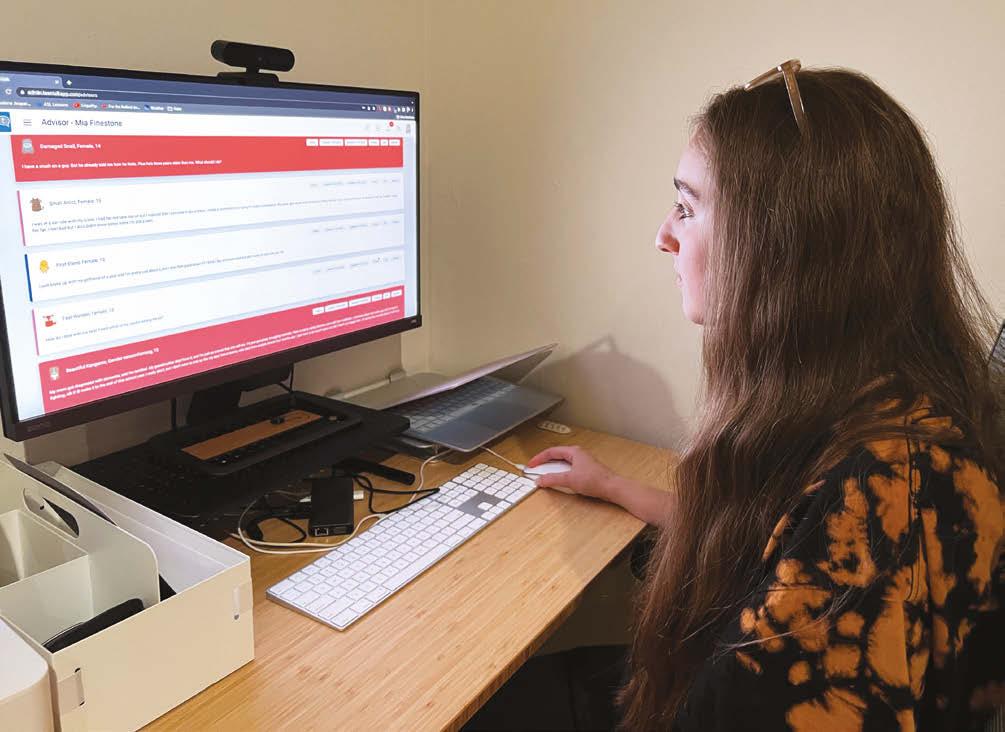
Some Teen Talk teen advisers volunteer because they want to both help peers and learn how to be better listeners. “I wanted to do it not only to help the users on the app but also because I know it’s really easy to
Adolescents who are otherwise well-adjusted often reveal anxiety about social dynamics, getting into a college of their choice or meeting parents’ expectations, said Kendra Singer, the Los Angeles-based program director of Teen Talk. A licensed marriage and family therapist, she also oversees the program’s supervisors.
“Even the kids who don’t seem like they’re struggling are,” said Singer, who is the mother of two teenage boys. “We see it on the app all the time.”
While ideally being part of a Jewish community conveys a sense of belonging, and with established youth groups like the Reform movement’s NFTY, Young Judaea, BBYO and others creating forums for teen engagement, even those Jewish teens who are connected are still vulnerable to loneliness and anxiety.
At The Blue Dove Foundation, an Atlanta-based nonprofit that focuses on mental health and addiction issues in the Jewish community, 17-year-old intern Lili Stadler proposed a survey in 2020 to see how local teens were coping during the pandemic.
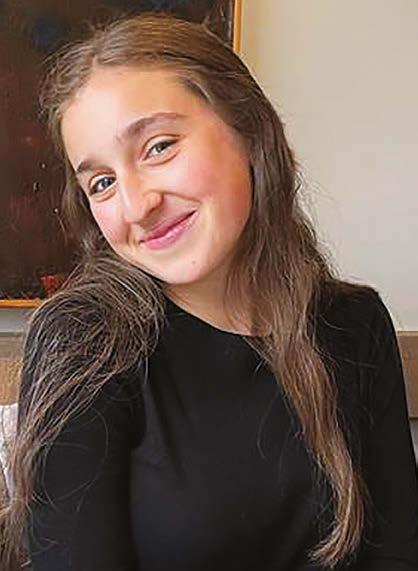
The online survey attracted 154 responses; about half attended a Jewish high school. Eighty-nine percent reported feeling stressed or anxious in the past six months. Half said they had “elongated periods of feeling hopelessness and/or intense sadness,” and one in five reported experiencing eating disorders.
When asked what would worry them most about reaching out for help, teens often said they didn’t want to burden anyone with their problems or let family or friends know they were struggling. Yet when asked whom they would trust most with their mental health, half said a friend. Only 20 percent answered a parent.
One positive aspect of the survey was the willingness of teens to respond, said Gabby Spatt, CEO of Blue Dove.
“Today, younger people are much more in touch with their feelings and emotions,” she said.
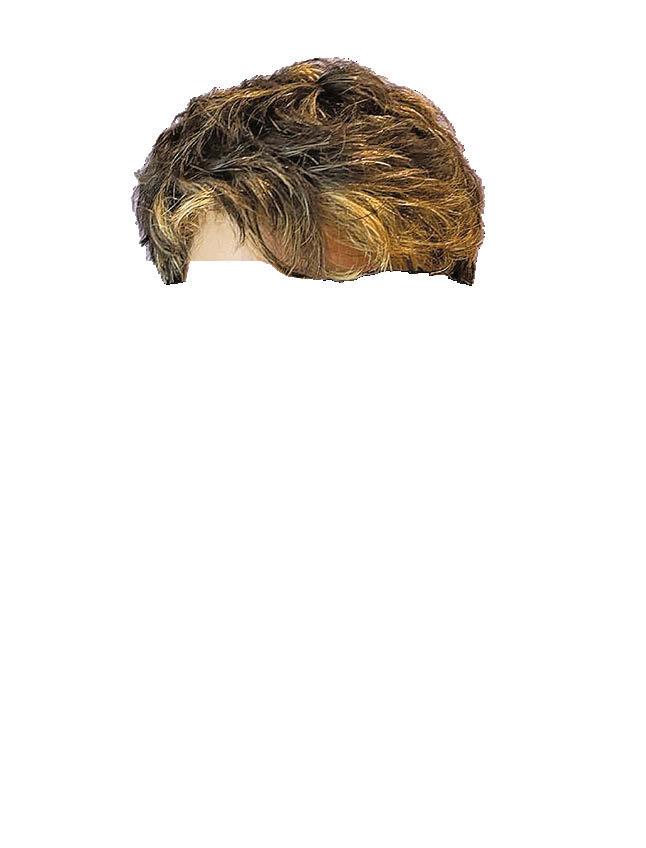
Even if they’re willing to open up, teens and young adults aren’t always sure what to do if a friend reveals emotional struggles. That’s why the BeWell initiative, a new partnership between JFNA and the Network of Jewish Human Service Agencies to address wellness and mental health among this cohort, provides Teen Mental Health First Aid. The six-hour training course, a program of the National Council for Mental Wellbeing that JFNA has infused with Jewish values, teaches participants to spot signs of a mental health concern—such as a decline in enthusiasm for previous interests or changes in behavior—as well as ways to provide support.
“My ultimate goal is that every teen in their community—Jewish and not Jewish—feels supported and has the education and resources they
need,” said Jillian Feiger, director of Jewish student connection and Israel study tour at JewishColorado, the JFNA partner for the state of Colorado, which served as a pilot site for BeWell.
BeWell, for ages 12 to 26, serves as an umbrella program for educating teens, young adults, caregivers, parents and Jewish youth professionals. Teen Mental Health First Aid was rolled out in summer 2022 at camps and youth groups and then at Hillels and day schools. Other training supports adults who work with young people. The initiative also organizes “Resiliency Roundtables,” bringing together stakeholders locally and nationally to collaborate and raise awareness.
The programming stresses that teens can support each other, but also makes sure participants realize that they aren’t responsible for resolving a peer’s serious mental health challenges.
“Taking care of each other is such a huge Jewish value,” said Beth Lipschutz, BeWell’s wellness coordinator at JFNA. “We’re teaching teens to look out for their peers, to ask questions, to listen, to help get them to an adult.”
Other programs similarly use Jewish values to help guide conversations around mental health. Tikkun olam, repairing the world, is what Chloé Nudelman said drew her to an internship with HereNow, a teen-led mental health initiative of The Jewish Board of Family and Children’s Services in New York City, with support from UJA-Federation of New York. The 17-year-old contributed to a guide for Jewish teens entitled, “What the Adults Aren’t Teaching Us About Mental Health.” It includes advice on how to communicate feelings, seek help and focus on self-care.

That’s just one example of what HereNow has called its “psychoeducational” approach. The program aims to build wellness and resilience through in-person events at New York City synagogues, youth groups, day schools and camps as well through an app and articles written by teens posted on websites in the 70 Faces Media group, such as MyJewishLearning.com or Kveller.
For example, Nudelman wrote an article about politely but firmly creating boundaries in relationships—whether with a romantic partner, co-worker or friend.
“When you are assertive in what you want and don’t want, and are clear in your communication, you are helping to bolster your self-esteem,” Nudelman wrote. “When you call the shots in your own life, you know you are worth something, and you tell others that you are valuable.”
‘WHEN YOU CALL THE SHOTS IN YOUR OWN LIFE, YOU KNOW YOU ARE WORTH SOMETHING.’
—CHLOÉ NUDELMAN
In other articles, teens have shared advice about test anxiety, communicating with parents and how to just “drop everything and breathe.”
Nudelman, who lives in New York City and is on the HereNow teen executive committee, said teens don’t often “have a space where we can speak about what’s going on in our lives, honestly, and to help others.” She is also working on a HereNow podcast, slated to be launched this year.
In Pittsburgh, UpStreet makes the peer-to-peer connection even more personal. The program, sponsored by Jewish Family and Community Services and funded by the Jewish Healthcare Foundation, trains teen mentors to contact their mentees twice a week for at least a year through a texting app that is monitored by professionals. UpStreet, for ages 12 to 22, also offers online chats with therapists and free one-on-one therapy.
The mentor relationship can be especially powerful for young people who feel isolated or have social anxiety, said Erin Barr, a social worker and UpStreet clinical coordinator.
“Getting messages from a peer makes you feel included,” she said. “There’s someone who genuinely cares about what happened in your day.”
And then there are teens who take a direct route in posting online experiences based on kindness and understanding, creating pages on popular social media networks that help others gain emotional literacy.
In June 2021, Zach Gottlieb of Los Angeles launched a website and Instagram feed called Talk with Zach to encourage peers to be more open about their emotions. He had just

Zach Instagram profile says. “We can’t change what we don’t talk about.”
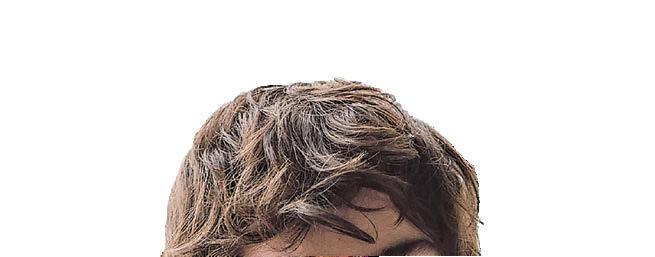
Among his video posts is a conversation with experts from the Semel Institute for Neuroscience and Human Behavior at the University of California Los Angeles about coping during Covid and a chat with other teens about why guys don’t like to talk about their feelings. On his website, teen-written blog posts call out the falseness of social media (“Instagram vs My Body”) and share personal pain (“I’m Not Too Old to Be Upset About My Parents’ Divorce”).
GOTTLIEBspent a year attending a new school remotely and was still wrestling with the loss of his grandfather, who died of heart failure just before pandemic shutdowns began. He felt ready to talk about his feelings—and to listen to those who needed to unload.
“I was hoping to reach as many teens as possible and have some impact,” said Gottlieb, 17. “I don’t think my expectations were super high because I thought a lot of people might not be receptive to this.”
The response was better than he imagined. Over the past year and a half, Gottlieb, whose mother is writer and psychotherapist Lori Gottlieb, author of the best-selling Maybe You Should Talk to Someone, has amassed 5,000 followers on Instagram and created a program for teen “ambassadors” from around the world who research topics and post on the site.
“We are teenagers who think we should talk more...” his Talk with
“People should know that our generation really wants to create a better world and to have an impact to change the culture for the better,” he said. “We want to talk about real life because that makes us healthier people individually and in society.”
Teen Talk App teentalkapp.com
The Blue Dove Foundation thebluedovefoundation.org HereNow projectherenow.org
B eWell jewishtogether.org/bewell UpStreet upstreetpgh.org
Talk With Zach talkwithzachofficial.com
For those who need immediate help, call or text 988 , the new number for the national Suicide & Crisis Lifeline.
‘PEOPLE SHOULD KNOW THAT OUR GENERATION REALLY WANTS TO CREATE A BETTER WORLD.’
—ZACH
 A Jewish
A Jewish
The broad, shimmering expanse of Baltimore’s Inner Harbor, a cove-like stretch of the Patapsco River, is unlike any other. Strolling the harbor promenade is a little like looking at a sculpture from multiple angles. Every step reveals a shifting skyline, new reflections of sky on water and different views of masts and smokestacks.
All of Baltimore gathers here, making the Inner Harbor a kind of maritime public square—a role that, judging from the area’s mix of Colonial-era and bold modern buildings, it has played since Revolutionary War days. From the U.S.S. Constellation, launched in 1854, to the newly unveiled Rash Field skate park and the arresting glass triangles of the National Aquarium, the harbor is itself a living exhibit of Baltimore’s social evolution.
Near the waterfront stand two of the country’s oldest extant synagogue buildings. Lloyd Street Synagogue, built in the Greek-Revival style in 1845, features the nation’s first Star of David rose window in its sanctuary, a design element later replicated in several other worship spaces.
traditionalists, who built a breakaway shul next door in 1876. Chizuk Amuno, as it was then known, later became a founding member of the Conservative movement’s United Synagogue of America.
In the 1890s, members of Chizuk Amuno sold the building to the B’nai Israel Orthodox congregation, which worships there to this day as one of the more than 30 Orthodox shuls in Baltimore. Indeed, roughly one in five of the area’s 95,000 Jews identifies as Orthodox, twice the national average. That community owes its robustness in large part to the global prominence of Ner Israel, a 90-yearold yeshiva and rabbinical college and a pillar of the haredi Agudath Israel of America movement.
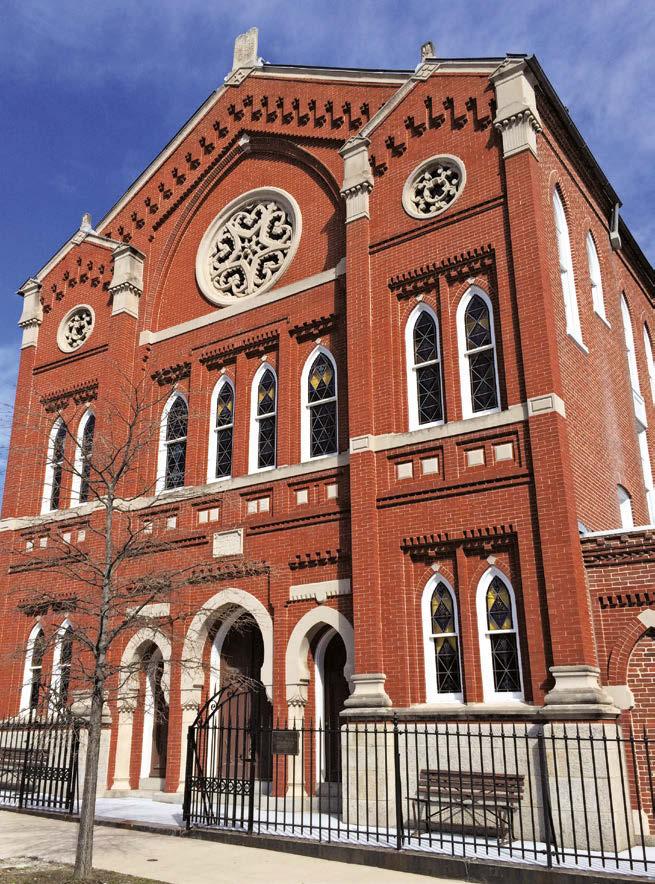
The yeshiva’s own trajectory— moving from Baltimore proper to suburban Pikesville—mirrors that of the larger Jewish community. After World War II, many Jews migrated from downtown to northwest Baltimore and its adjacent suburbs.
Another first in the nation was the opening in 1854 of the original Young Men’s Hebrew Association. This development helped to usher
Hadassah founder Henrietta Szold and her sisters were among the earliest congregants at yet another of the nation’s oldest congregations, Oheb Shalom, established in 1853. Their father, the Hungarian-born Rabbi Benjamin Szold, had immigrated to the city in order to take over its pulpit. Both father and daughter influenced the course of American Jewry in their own spheres. Henrietta, of course, was a social activist and pioneering Zionist. Benjamin steered a centrist course at the helm
a theological rift was brewing among Baltimore’s Central European Jewish immigrants.
The German Jewish Reform movement swelling in Europe was imported to Baltimore by newcom ers who founded liberal temples such as Har Sinai, which opened in 1842. Ironically, Har Sinai merged in 2019 with Oheb Shalom, where, 170 years earlier, Benjamin Szold had empha sized stricter Shabbat observance and tradition to counter the community’s liberal tug.

Generations after those ideolog‑
ical conflicts receded, Baltimore retains a tight knit neighborhood feel that inspired Jewish native sons like filmmaker Barry Levinson, many of whose movies are love letters to the Baltimore Jewish experience. Another is Leon Uris, whose best selling novel Exodus was based on a repurposed Chesapeake Bay steamship used to transport early Zionists to Palestine.
Adopted son Gustav Brunn, a Ger‑ man Jewish refugee whose wife re‑ portedly bought his way out of Buch enwald in 1939, influenced the city’s culinary scene soon after his arrival that same year. Brunn, who had oper ated a spice company in his native Wertheim, concocted a blend of herbs and spices—Old Bay Seasoning, now certified kosher by the Ortho dox Union—that locals and tourists
alike have for decades paired with the city’s signature dish, the decidedly unkosher Chesapeake blue crab.
A kosher seasoning dusted atop local treyf? It’s as good a metaphor as any for the contrasts and coexistence that define today’s Charm City.
Hilary Danailova writes about travel, culture, politics and lifestyle for numerous publications.
Baltimore’s walkable down‑ town boasts distinct neighborhoods around the Inner Harbor. Fells Point is the most charming, with its cobblestone streets dotted with boutiques, bars and eateries. You’ll find a monument to onetime resident Frederick Douglass along with a preserved street of rowhouses— Douglass Place that the writer built for African American tenants.
For the most iconic harbor view, hike west to the Federal Hill area, where Civil War cannons complement the vistas from Federal Hill Park . Just down the hill on the harbor is the Maryland Science Center , which features a planetarium and observatory.
Across the harbor from Federal Hill, the National Aquarium is a stunning modern building whose
massive shark and dolphin tanks are among Baltimore’s top attractions. Nearby, the Baltimore Holocaust Memorial features a dark, flame-like abstract sculpture by Joseph Sheppard.
Both Lloyd Street Synagogue and B’nai Israel are now incorporated into the campus of the Jewish Museum of Maryland , whose two main galleries are filled with historical photographs, ritual objects and explanatory documents. Lloyd Street visitors can tour an ongoing excavation of a recently discovered 19th-century mikveh.
Take time to wander the Mount Vernon neighborhood, where cultural highlights include The Walters Art Museum , an impressive collection that spans ancient Egypt, Islamic manuscripts, medieval European armor and Russian imperial objects. Nearby, the George Peabody Library boasts
one of the most magnificent library interiors anywhere—like a Venetian palazzo crossed with a lacy wedding cake.

The European art collection of businessman and civic leader Jacob Epstein, who died in 1945, have become central to the permanent holdings of the Baltimore Museum of Art . So, too, has the 20th-century French masterworks donated by Jewish sisters Claribel and Etta Cone, who brought back hundreds of paintings from their visits to Henri Matisse and Pablo Picasso’s Paris ateliers.
You’ll need a vehicle to reach Baltimore’s most Jewish neighborhoods—the leafy, largely residential Park Heights and Cheswolde districts in the northwest city limits. Park Heights Avenue and the surrounding streets house myriad Jewish orga -
nizations, while kosher eateries cluster around Reisterstown Road in Park Circle. The Jewish communities extend northwest to the adjacent towns of Pikesville and Owings Mills.
East of downtown lies America’s first research university, Johns Hopkins , which was founded in 1876 and has been home to numerous Jewish scholars, including the erstwhile medical student and iconoclast writer Gertrude Stein, who was friends with the Cone sisters.
Hadassah Greater Baltimore counts over 4,500 members in six chapters scattered throughout the city and suburbs. Major projects include the operation of Scene II, a resale store located in Pikesville on Reisterstown Road, as well as the yearly gala, Cell-a-Brate, to raise funds for the Hadassah Medical Organization.
COURTESY OF VISIT BALTIMORE; PHOTO BY JASON VARNEY (RIGHT) Lloyd Street SynagogueDeep into the first few months of the Covid-19 lockdowns in 2020, philanthropist Ronald Lauder—scion of the Estée Lauder cosmetics empire and founder and funder of the 10-year-old Auschwitz-Birkenau Memorial Foundation—organized a Zoom reunion with dozens of survivors of the notorious concentration camp. Only months earlier, he had brought these men and women to Auschwitz to mark the 75th anniversary of the camp’s liberation on January 27, 1945, a day that is now observed as International Holocaust Remembrance Day.
While many topics were covered on that Zoom, as soon as the conversation turned to gefilte fish, the chat room came alive with animated culinary conversation.
“We very quickly realized that one of the things that kept people engaged and fostered a lively, charming dialogue was food and cooking,” said Maria Zalewska, the executive director of the foundation. “We could barely get them to stop talking.”
At the end of the call, Zalewska put out a request for recipes—and received a multitude of gefilte fish variations as well as other Ashkenazi classics.
“That’s when the idea for a cookbook was born,” she told me from her home office in her native Warsaw.
The result is Honey Cake & Latkes: Recipes From the Old World by the Auschwitz-Birkenau Survivors, an historical record as much as a cookbook that came out in September. It features dozens of old photos
and accounts of life before, during and after the war as well as the recipes that helped sustain survivors’ memories of family and kept them anchored to their Jewish heritage.
“The Nazis tried to eradicate Jewish culture, music, literature and cuisine,” said Zalewska. “This is an affirmation that they didn’t.”
Rather than a sad postscript to genocide, the book is a celebration of the power of food told from the perspective of a population who, contrary to expectations, telegraphs survival, renewal and joy.
Underwritten by Lauder, edited by Zalewska, photographed by top New York food photographer Ellen Silverman and styled with a timelessly chic aesthetic, the book—with homey recipes for favorites from potato kugel and stuffed cabbage to plum dumplings and rugelach—invites readers to engage and participate with survivors’ stories rather than merely sympathize.
“Survivors are used to being pigeonholed into a proscribed identity and an expected set of emotions,” said Zalewska. “It was important to me that this book allowed them to be seen in a fresh light without erasing the tragedy of the Holocaust.”
There was also a sense of urgency.
“We knew that the survivors were dying, and that there were perhaps a few hundred remaining around the world,” said Zalewska.
In the book, Budapest-born survivor Eva Szepesi, who has lived in Frankfurt, Germany, since 1954, shares a recipe for Hungarian Gou-
lash and nokedli (dumplings) that she remembers her mother and grandmother making before the war and which the 90-year-old now cooks for her grandchildren and great-grandchildren.
Tova Friedman, who was 1 year old when the war ended, shares a recipe for tzimmes that her mother began making once the family settled in a displaced persons camp in Germany after the war.
“It was as if through remaking those recipes she was reawakened,” said the Polish-born Friedman, 84, whose own book, The Daughter of Auschwitz, became a New York Times best seller in the fall.

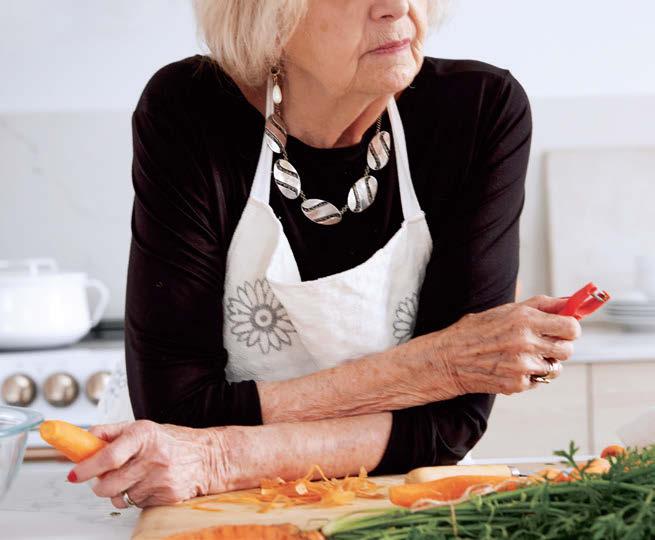
One of five survivors who gathered in New York City to be photographed for the book, Friedman also contributed a recipe for kasha varnishkes from her late husband’s family. She started making the dish after they married and settled in Highland Park, N.J.
For her part, Zalewska—whose great-grandfather, Jan Zalewski, was one of an estimated 100,000 Polish Catholics who died in AuschwitzBirkenau—sees the book as a potent weapon against the current rise in antisemitism.
“Anything we can do to refute Holocaust denial right now is essential,” said Zalewska. “That this book projects hope and joy is a bonus.”
Adeena Sussman is the author of Sababa: Fresh, Sunny Flavors from My Israeli Kitchen and the upcoming Shabbat: Recipes and Rituals from My Kitchen To Yours, set to be released on September 5. She lives in Tel Aviv.
Serves 4 to 6

2 tablespoons v egetable oil
2 lar ge onions, sliced
1 pound boneless beef shoulder, cut into bit e-size chunks
1 r ed bell pepper, chopped
1 y ellow bell pepper, chopped
2 t omatoes, sliced
1 tablespoon t omato past e
2 t easpoons sweet Hungarian paprik a
1 1/2 t easpoons salt
(NOKEDLI)
1/4 t easpoon salt, plus mor e for the cooking w ater
1 c up all-purpose flour
2 eggs
Up t o 1/2 cup cold w ater
Vegetable oil, for finishing
oil in a large Dutch oven over medium heat. Add the onions and cook until they start to soften. Increase the heat to medium-high, add the beef and brown on all sides. Add the red and yellow peppers, tomatoes, tomato paste, paprika, salt and 1/2 cup water. Bring to a simmer, then cover, reduce the heat to low and cook for about 2 hours, until the beef is tender. Lift the lid a few times to stir and add more water if the pot is looking dry.
Make the dumplings: saucepan of salted water to boil over medium-high heat. In a large bowl, whisk the flour and salt. Stir in the eggs using a wooden spoon and add just enough water to make a soft, sticky dough. Grate or cut the dough into small pieces and drop them into the boiling water. After the nokedli rise to the surface, cook for an additional 2 minutes. Drizzle the oil over the nokedli and serve immediately with the goulash.

Serves 4 as a main dish, 6 to 8 as a side
4 c ups water
1 c up kasha (buckwheat gr oats)
1 e xtra large egg, bea ten S alt
1 c up bowtie (farfalle) pasta

3 tablespoons butt er or v egetable oil
1 lar ge yellow onion, dic ed
12 ounc es white mushr ooms, sliced about 1/4-inch thick
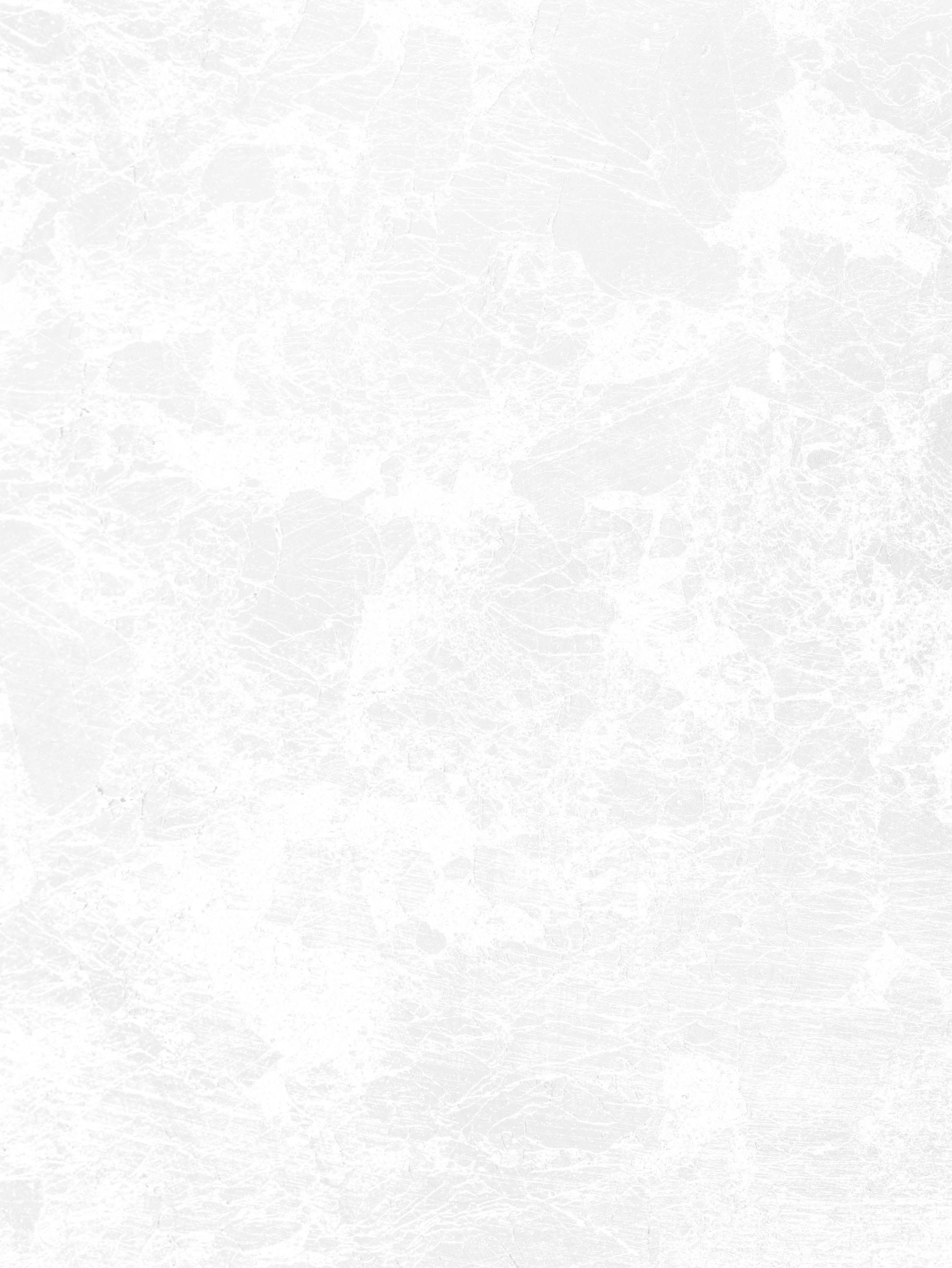
3 clo ves garlic, minc ed
1/4 c up soy sauce
1. Bring 4 cups of water to a boil and have it ready. Put the
2. Heat a heavy-bottom 8-quart pot over medium-high heat until it is very hot. Add the kasha-egg mixture and stir continuously, breaking up clumps so that the kasha is very hot. Slowly pour the boiling water onto the hot kasha and add a pinch of salt. The kasha will explode and froth (this is the fun part). After all the water has been added and the pot settles down, skim any schmutz that might be floating on top. Reduce the heat to low, cover and cook until the water is absorbed, about 30 minutes.
3. While the kasha is cooking, prepare the bowtie pasta according to package instructions (cook in salted water for about 12 minutes).
4. While bowties are cooking, heat the butter (or oil, if pareve) in a wide saucepan. Add the onion and cook until slightly softened, about 5 minutes. Add the mush -
For photographer, writer and artist Bonnie Lautenberg, expressing what’s on her mind through art is second nature. Now, her outspoken views on everything from politics to women’s issues to Hollywood are on display at the Jewish Museum of Florida-Florida International University in Miami.
“Lady Liberty: A Bonnie Lautenberg Retrospective,” which runs through March 26, showcases 30 pieces of her digital and photo col-
The figures huddle together in the darkness, Stars of David visible on their clothing. Some sit on the floor; others lean against walls. Their faces are haggard but focused, their gaze directed at an accordion player, who radiates light into the room.
Entertainment is a 1943 penand-ink drawing by Bedrich Fritta, an artist imprisoned at the Theresienstadt concentration camp, or Terezin in Czech. Known as a show camp and propaganda tool to hide the mass murder of
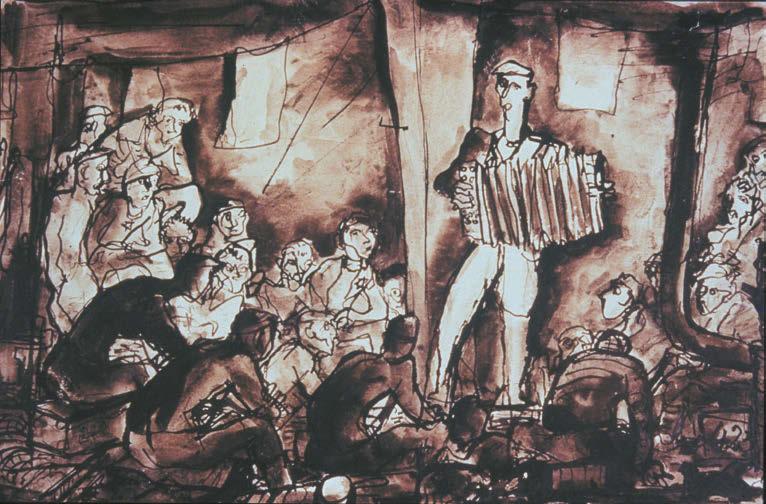
lages and photography taken from different series, most of them of powerful and impactful women. The exhibit includes work from the past two decades as well as a number of fresh artworks.
Among the timely new pieces is Tears of Roe, an image of the Statue of Liberty with tears running down her cheeks that is part of Lautenberg’s pop-art inspired “Lady Liberty” series. The six-foot-tall pink-andgreen collage is set on a lightbox and
Europe’s Jewish population, it housed prominent Jews, musicians, artists, writers and actors. Still, starvation and disease contributed to the death of 33,000 at Terezin, located in present-day Czech Republic, and prisoners lived under the constant threat of deportation to extermination camps. Fritta himself died in Auschwitz at age 37.
This drawing is one of many creative works—concert posters, musical compositions and more— in the art book Our Will to Live , edited by Mark Ludwig, founder of the Terezin Music Foundation. The imagery accompanies firsthand critiques of performances in the camps from composer, pianist and conductor Viktor Ullman, who
presides over the exhibit space. Lautenberg created Tears of Roe in June 2022, she said, to channel her emotional reaction after the overturning of Roe v. Wade.
“I was devastated and wanted to cry,” noted the Hadassah life member, “and knew that many women felt the same way.”
Lautenberg sees the iconic symbol both as a muse and a call to action. “Lady Liberty, the first image you see arriving in New York Harbor,” she said, “represents freedom to all who come to our shores.”
Lautenberg, the widow of Senator Frank R. Lautenberg of New Jersey, who passed away in 2013, is no stranger to the
was interned at Terezin and later murdered, at age 46, in Auschwitz.
“I wanted to provide the reader with the sense of just how special this cultural community was at Terezin,” Ludwig said of Our Will to Live , the title taken from a quote from Ullman: “Our desire for culture was equal to our will to live.”
The series of 26 critiques by Ullmann, who also wrote musical compositions and an opera while in the camp, serve as an entry point into Terezin.
“As you read these critiques,” said Ludwig, “you feel the personal connection he had to so many of these gifted people. Like Virgil, the guide in the Divine Comedy , he takes the reader into the various stages of hell and purgatory.”
Initially, concerts and events were held in secret, in the barracks’ attics and basements, as depicted by Fritta. As more musicians and artists arrived, sometimes smuggling in instru -
ments, the Nazis permitted concerts, theater, opera, lectures and even sporting events.
Ullmann’s review of the Terezin production of Die Fledermaus , a comic operetta by Johann Strauss filled with drunken antics, is suffused with the irony of performing the piece: “We in Theresienstadt look with a certain amount of disillusionment at this world, whose main supporters often sway back and forth and who are perpetually more or less tipsy.”
Before getting onto a boxcar going east, he left his manuscripts and compositions at the Terezin library.
Musical tracks from Our Will to Live and information about events based on the book are available at our-will-to-live.org .
“This is music of a higher order,” Ludwig said. “And it has its place just on its own merit, divorced from the tragic fate of its composers.”
—Alexandra Lapkin Schwankintersection of art, activism and pol itics. Her marriage (a second one for both her and the senator) allowed her access to Congress, resulting in the 2012 photo series, “How They Changed Our Lives: Senators as Working People.”
The artist spoke with Hadassah Magazine immediately after her re‑ turn from a tour of sites important to the civil rights movement in Selma, Montgomery and Birmingham, Ala., organized by the Jewish Federation of Palm Beach County.


“Seeing the exact location in Mont‑ gomery where Rosa Parks boarded the bus as well as the museum dedi‑ cated to her was amazing,” said Laut enberg, who splits her time between homes in New York City and Palm Beach.
While Lautenberg has not depict–ed Parks in any of her series—yet— among her collages at the Florida exhibit is one focused on slave turned abolitionist Harriet Tubman. The artwork, titled Wanted, includes a recreation of a wanted poster that slave owners used to advertise a reward for capturing Tubman, who helped slaves escape through the Underground Railroad. It also in‑ cludes images of Tubman and stills from the 2019 film starring Cynthia Erivo as the freedom fighter.
In a lighter vein, Lautenberg’s
“Art Meets Hollywood” dig ital collage series brings together barrier breaking cinematic depic tions of women with works of art. Barbra Streisand in Yentl next to an untitled 1983
photo from acclaimed Jewish artist Cindy Sherman is one selection now on view.
“Bonnie’s works cause us to stop and think about the issues facing our world today,” said Susan Gladstone Pasternack, executive director of the
Florida museum. “While the content of her work is not specifically Jewish, her subject matter, especially Tears of Roe, manifests the Jewish concept of tikkun olam.”
“I’m proud to be Jewish,” said Lautenberg, who was appointed in 2022 to the President’s Advisory Committee on the Arts and is now collaborating on a biography about her husband, due out in 2024, that will showcase her photography. “I’m honored to be offered a solo exhibit at the Jewish Museum of Florida at a time when women’s issues are front and center.”

Jan Engoren is a freelance writer and former newspaper reporter originally from New York who is now enjoying the South Florida lifestyle.


‘Tears of Roe’ by Bonnie Lautenberg
Sheila and Stanley Schwartz have built lifelong friendships through Hadassah. With family in Israel, they’ve also seen Hadassah’s work on the ground and believe in its mission. The Schwartzes have now established four

charitable gift annuities (CGAs) to support Hadassah’s work.
You can make a lasting impact and receive lifetime income, too. Contact us to learn how a CGA could benefit you.
The information and content contained herein are intended for educational purposes only and are not intended to provide legal, tax or other professional advice or to be relied upon. For such advice, please consult with an attorney, tax advisor or accountant. Figures cited in any examples are for illustrative purposes only. References to estate and income taxes include federal taxes only and are subject to change. State income/estate taxes and/or other state laws may impact your individual results. The solicitation disclosure on page 54 is incorporated in this advertisement.
Charitable deductions are allowed to the extent provided by law. Hadassah shall have full dominion, control and discretion over all gifts (and shall be under no legal obligation to transfer any portion of a gift to or for the use or benefit of any other entity or organization). All decisions regarding the use of funds for any purpose, or the transfer of funds to or for the benefit of any other entity or organization, shall be subject to the approval of the Board or other governing body of Hadassah.
California residents: Annuities are subject to regulation by the State of California. Payments under such agreements, however, are not protected or otherwise guaranteed by any government agency or the California Life and Health Insurance Guarantee Association. Oklahoma residents: A charitable gift annuity is not regulated by the Oklahoma Insurance Department and is not protected by a guaranty association affiliated with the Oklahoma Insurance Department. South Dakota residents: Charitable gift annuities are not regulated by and are not under the jurisdiction of the South Dakota Division of Insurance.
HADASSAH, THE WOMEN’S ZIONIST ORGANIZATION OF AMERICA, INC.
Hadassah, The Women’s Zionist Organization of America, Inc., Hadassah, the H logo, and Hadassah the Power of Women Who Do are registered trademarks of Hadassah, The Women’s Zionist Organization of America, Inc.
“If
... [you] might as well do it through a
It’s a simple win-win decision.”
—Stanley Schwartz, Atlanta, Georgia
Across "Pygmalion" monogram Site of a fortified summit a key battleground in 1948 War of Independence Spanish bed Seed cover Detergent brand with a fabric in its name "Woe is me!" It literally means "spring the three" Coarse file "To every thing there is ___" Core It flows in trees Purpose of visiting 51across "Funny Girl" ___ Michele Bean favored by Hannibal Lecter Expenses A 51-across in Israel's north replete with hot springs and an ancient mosaic More jutted, as a road "Casablanca" cafe owner Lizt's teacher Site of Roman and Crusader ruins along the beach Site featuring a zodiac synagogue mosaic "Do ___ others as..." Alternative to steps Arrive to the base feet
By Jonathan SchmalzbachS ite of a fortified summit and a key ba ttleground in the 1948 War of Independence
It lit erally means “spring of the three”
Reser ve in Eilat popular with divers
“L a la” preceder
McC arthy
Munich” star Eric
A 51-across near Z ikhron Ya’akov on land tha t was purchased b y Baron Edmond de Rothschild
A 51-across in I srael’s north replete with hot springs and an ancien t mosaic
More jutted, as a road
Theme of this puzzle: Israel's ___ "There is nothing like ___"
S ite of Roman and C rusader ruins along the beach

 By Gabrielle Zevin (Knopf)
By Gabrielle Zevin (Knopf)
This eminently readable and engaging novel centers on Sadie Green and Samson “Sam” Masur, two smart Jewish kids from Los Angeles. (Sam is biracial, with one Jewish parent and one Korean.) After falling out of friendship as teenagers over an eth ical breach, the pair meet again as university students in Cambridge, Mass.—Sadie at MIT, Sam at Har vard—and launch, with Sam’s college roommate, Marx Watanabe, a highly successful video game company. The novel follows 30 years of their inter secting lives and friendship.
Those who worry that Tomorrow, and Tomorrow, and Tomorrow will become mired in the geeky complex
ities of gaming or alternate universes will soon find their concerns unfound‑ ed. Though author Gabrielle Zevin, who mines her own mixed Jewish and Korean background for the char acter of Sam, is an avid gamer, she is far more interested in exploring questions of friendship than video games: What brings people together to form an enduring bond? What prevents them from crossing the divide from platonic to romantic? How do friends retain a warm con nection when they work together professionally? Through rich, sharp character portraits, the New York Times best selling novel deftly exam ines how friends compete with each other, hurt each other, withdraw from each other and, ultimately, provide tender loving care for each other.
Along the way, Zevin floats inter esting ideas about intersectional identities, living with disabilities and the strictures placed on friendships.
Early on, for instance, Sadie’s grand mother, Freda, a Holocaust survivor, pointedly says, “Friendship is friend
ship, and charity is charity…. You know very well that I was in Ger many as a child…[and] I can tell you that the people who give you charity are never your friends. It is not possi ble to receive charity from a friend.”
Throughout, the author makes a game of literary references—the book’s title is one of Macbeth’s fa‑ mous soliloquies—and peppers her prose with allusions to Greek mythol ogy and Emily Dickinson, among others. She also has fun with puns and names. Why, for example, does Sam change his surname from Masur to Mazer?
Parsing the plentiful meanings behind characters’ names is just one of the many pleasures readers will enjoy in this beautifully written, com plex and meaningful novel.
—Robert Nagler MillerRobert Nagler Miller writes frequently about the arts, literature and Jewish themes from his home near New York City.
The short story has a long history in literature as well as biblical and talmudic tradition. Indeed, Alice Munro, the only writer to win a Nobel Prize for short stories, once noted that “wherever women get together, I think there’s an urge to tell stories.” She also said a short story should be as “durable and freestand ing” as a house.
In two new story collections, writ ers Ronna Wineberg and Nancy Ludmerer have accomplished that feat while carrying on the tradition, both Jewish and secular, of women telling stories.
In Artifacts and Other Stories, Wineberg, author of two previous collections and the novel On Bittersweet Place, gives us 14 stories about women, mostly Jewish New Yorkers, whose lives are sometimes dictated by Jewish values, though not often by observance. These are women in the middle years of their lives, some still married and others recently divorced, all asking what love is and what the future holds.

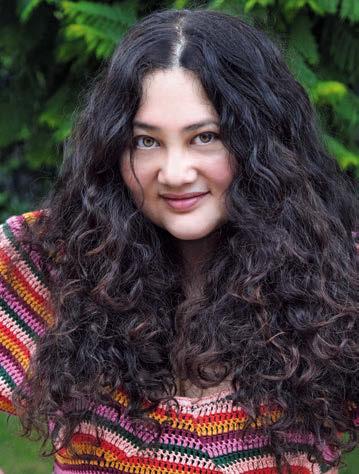
Join us on Thursday, February 16 at 7 PM ET as Hadassah Magazine Executive Editor Lisa Hostein interviews Gabrielle Zevin about her New York Times best seller Tomorrow, and Tomorrow, and Tomorrow . Named Amazon’s top book of 2022, the novel centers around the 30-year relationship between Sadie Green, a Jewish woman from Los Angeles, and Sam Masur, her Jewish Korean childhood friend, as they develop a successful video game company. Set against the backdrop of gaming culture, the intricate and imaginative book is a rich character study of an enduring friendship interspersed with fascinating ideas around contemporary identities, living with disabilities and the need to love and be loved. Free and open to all. To register, go to hadassahmagazine/books .
In “Hurricane,” the most Jewish of the tales, Alice has an affair with Todd, whom she met in synagogue. On Saturdays, after services and “when both their spouses are otherwise occupied because neither has a spiritual life,” Alice and Todd make love at a hotel.
“It is an odd ritual, Alice knows, after worshipping and imploring God for blessings, to then break a commandment,” writes Wineberg. Like many of the collection’s female characters, Alice thinks she loves her husband but isn’t sure they still are— or ever were—compatible.
Wineberg is a master of metaphor. In “Framing the Picture,” Ginny considers leaving her scientist husband, Lew, wishing people were as transparent as the zebra fish he studies. “Why weren’t our hearts, needs, and desires transparent, too?” she thinks.
In “Dislocation,” Laurel wonders whether the appearance of a second bed in her bedroom, to accommodate the bad back of her husband, Mark, represents the dissolution of their marriage.
The title story features recently divorced Nina visiting her online date’s apartment to view his spectacular collection of international artwork and sculpture. Afterward, she ponders the significance of the old photos and children’s art cluttering her own lonely apartment. As in most of these stories, Wineberg’s main character wonders “what she is doing here. Here, meaning not just his bed and his apartment, but here, in her life.”
These stories do not end with closure, but with the women soldiering on, living their lives and searching for that ephemeral thing called love.
Collateral Damage: 48 Stories is Ludmerer’s debut book and a winner of Snake Nation Press’s Serena

McDonald Kennedy Award for Fiction. These stories are brilliant bits of flash fiction. Many fit on just one page yet capture entire worlds.
The title story
contains only nine lines, told from the point of view of a fly. “With humans,” the fly observes, “every day is bloodshed.” The “bloodshed” in this story, as in many in the book, is a metaphor for marriage.
Although there is much more variety in this collection than in Wineberg’s, many of the characters are likewise New York Jewish women in the throes of love, marriage and divorce. In “Spirit of the Staircase,” Emily leaves her fiancé at home in New York for a business trip to Paris, where she reconnects with Robert, who once broke her heart. They don’t sleep together, “but still Emily felt guilty.” Even after Robert hurts her once again, her parting words are, “If I’m ever back in Paris, I’ll let you know.”
In the one-paragraph “Bar Mitzvah,” Dinah, “the wicked stepmother,” saves her stepson Benjy from choking at his own bar mitzvah buffet. Afterward, Benjy’s mother, the narrator of the story, says to herself “…thank you God while this woman who had wrecked our lives ten years earlier hugged my son, and I knew then, on his Bar Mitzvah day, that for everything there is a purpose under heaven.”
“Dream Job,” Ludmerer’s longest piece at nine pages, is a tragic New York story. Alice, a temp agency employee, placed a young woman, Liana Broder, in a financial-sector job on September 10, 2001. Fifteen years
later, Liana still haunts her dreams.
The short story writer’s consummate skill is to capture an entire novel’s plot in a few pages, or even a few paragraphs. Veteran Ronna Wineberg and newcomer Nancy Ludmerer both display that skill in abundance.
A prolific writer whose books have been translated into 15 languages and been awarded prestigious prizes
in France and Italy, Hugo Hamilton is in a perfect position to ask the question at the heart of his 10th novel: What would hap-
pen if a book could talk? The Pages, with its unusual book-within-a book narration, is Hamilton’s answer.

Using what may appear to be a complicated literary device that nevertheless successfully addresses the central question, The Pages weaves fact and fiction over a multilayered plot that journeys through almost
100 years of history up to the political events of today.

“I have the urge to contribute,” the narrator says early in The Pages “A book wants to get out there and speak up. I spent two years on the shelf right next to a small book on insects.
“It was full of warmth, that book. We became great friends. It was the happiest time of my life, living with all that buzzing, like a constant summer.
“But this is absurd,” the book adds.
Perhaps.
The narrator, the center of this complex yet entertaining literary expedition, is a copy of the real-life novel Rebellion, first published in Germany in 1924 by celebrated Austrian Jewish journalist Joseph Roth.
Rebellion is the story of Andreas Pum, a veteran who lost a leg in World War I and who makes a living as a barrel-organ player. On a tram, Pum gets into a dispute with a businessman and another passenger. The organ grinder raises his crutch in anger, and a policeman is called. One of his accusers says Pum “is probably a Jew”; he is arrested and jailed, eventually losing his right to earn a livelihood as a musician.
In 1933, the Nazis banned Rebellion, after which college students stole copies from libraries, bookshops and homes to be thrown onto bonfires. The students passed the books from hand to hand in a chain before throwing each book into the flames. “This was their moment,” Hamilton’s narrator explains. “Their revenge on learning. This was their chance to step outside received wisdom and take part in a glorious act of self-vandalism. Returning to a time before knowledge. The right not to know.”
One copy of Rebellion—the narrator—is smuggled inside the cover of another book and saved from the inferno. (Hamilton paraphrases remarks by Heinrich Heine, the German Jewish writer: “Wherever they save a book from burning, they will end up saving human beings.”)
The narrator relates its own history and how it has “accumulated the inner lives of my readers. Their thoughts have been added in layers underneath the text, turning me into a living thing, with human faculties.” The work passed from person to person in Germany before ending up in the United States in the hands of artist Lena Knecht.
Lena, of Irish and German descent, becomes fixated with the half-map,
half-illustration that had been drawn on one of the book’s blank pages by the copy’s original owner, a Jewish university professor. She believes it to be a guide to some treasure and decides to return with it to Germany and find where it leads.
In unraveling the mystery of the map, Lena encounters the same forces that swept across Europe in the 1930s and ultimately led to war and the Holocaust: the rise of the far right, racist hatred and little tolerance for immigrants. In Berlin, Lena is mugged, and the thief steals her copy of Rebellion, though he soon tosses it aside in a park.
The book is found and returned to Lena by Armin, an orphaned Chechnyan refugee who lives with
shrapnel in his body from a bomb that exploded during the war in his native land. His sister, Madina, who lost a leg in that war, now plays accordion in a Berlin band—an echo of the events in Rebellion.
Hamilton, in this multifaceted tale, is highlighting the interconnectedness of time and history, the roots of nationalism and identity. That history repeats itself, perhaps nowhere more brutally than in the acts of nationalistic dictators and despots, is a potent reminder. It is not a coincidence, Hamilton—and his narrator—is telling us, but a warning.
 —Stewart Kampel
—Stewart Kampel
Your Hearts, Your Scars by Adina Talve-Goodman (Bellevue Literary Press).
This short, compelling collection of personal essays gives readers a glimpse into the life of a young woman living with a transplanted heart. The daughter of two rabbis, Talve-Goodman was born with a congenital heart condition and received a transplant at age 19. In her writing, she is a sharp observer, funny, grateful and very likeable, who understands deeply that her adult life is tied to the loss of another person.
She recounts young romances, adventures as an editor in New York City, hospital visits, reactions to the scars from her surgery and ordinary encounters that take on significance. Sadly, Talve-Goodman passed away at age 31. Published posthumously, her essays will reverberate in many hearts.
The Absent Moon: A Memoir of a Short Childhood and a Long Depression by Luiz Schwarcz. Translated by Eric M.B. Becker (Penguin Press). The author, a prominent Brazilian publisher, writes with striking clarity and courage about his experiences with late-onset bipolar disorder as well as coming to terms with his own family history.
Schwarcz’s story of inherited intergenerational trauma related to the Holocaust may be familiar but his take on the subject is singular, and his spare prose is full of wisdom and beauty. Although depression and bipolar disorder can still rob him of peace and certainty, he is nevertheless blessed with a loving family and a successful career.
Small World by Laura Zigman (Ecco). The novel’s title is also the name of a neighborhood listserv where local Bostonians list products and services; the narrator, Joyce, privately turns those listings into poems. With empathy and humor, Zigman spins a tale of family and community as
she brings Joyce and her older sister, Lydia, both divorced and childless, to live together again in Boston, 30 years after Lydia graduated from college and moved across the country. While the two don’t talk much about another sister, who had disabilities and died at age 10, her memory is a presence. Zigman, the author of several terrific novels, understands sibling dynamics well, and Small World was inspired in part by her own experience of losing an older sister as a young child.
The Red Balcony by Jonathan Wilson (Schocken). Wilson’s enthralling work of historical fiction and legal drama opens in Jerusalem in March 1933. The novel revolves around the trial of the killers of Haim Arlosoroff, a leader of the Jewish community in Mandate Palestine who was assassinated in Tel Aviv, and Ivor Castle, the Oxford-educated British Jewish attorney called in to assist in the defense.
With rich period detail, Wilson, the author of eight previous works, including A Palestine Affair , captures the ambiance and intrigue of the place and era. Layered among the conflicts between Jews, Arabs and the British are themes of ethics, identity and justice as well as great romance and sex.
My Last Innocent Year by Daisy Alpert Florin (Henry Holt). This debut novel is an evocative portrait of campus life in the late 1990s, when college senior Isabel Rosen finds both her voice and a path toward to self-understanding and adulthood. The only daughter of the widowed owner of a Lower East Side appetizing store, she must finish her final semester at a fictional private New England college, while navigating the sometimes messy issues of sexuality and consent, independence and ambition.
Sandee Brawarsky is a longtime columnist in the Jewish book world as well as an award-winning journalist, editor and author of several books, most recently of 212 Views of Central Park: Experiencing New York City’s Jewel From Every Angle.
Walter Rosenberg was 18 years old when he was taken from a small town in what was then Czechoslovakia and sent to Auschwitz. The roughly two years he spent in the infamous concentration camp makes up the first half of British journalist Jonathan Freedland’s detailed, well-researched and moving book, The Escape Artist
But very little in those pages prepares you for what follows: Rosenberg escapes from the camp and attempts to tell the world the truth about the Nazi atrocities that he witnessed—and his account is largely ignored.
The Auschwitz portion of the book is, perhaps, less emotionally charged than one might expect because it is sadly familiar, akin to accounts such as Elie Wiesel’s harrowing Night as well as memoirs from other survivors.
But Rosenberg’s story isn’t only about survival; it is also about resistance, a determination to escape if only to warn the Hungarian Jews— in early 1944, the last large group of European Jews facing deportation—what awaited them in the concentration camp. He had hoped this knowledge would make them resist Nazi deportations.
“It’s much easier to slaughter lambs than hunt deer,” Freedland quotes him as saying.
The Escape Artist recounts how, in April 1944, Rosenberg and fellow prisoner Alfred Wetzler became the first Jews to break out of Auschwitz and avoid recapture—two of only four inmates to pull off that feat. For three days, they hid under a pile of
wood near the edge of the camp that they had laced with gasoline-soaked tobacco to throw guard dogs off their scent. After escaping, Rosenberg took the name Rudolf Vrba. He and Wetzler ultimately wended their way to Czechoslovakia and were put in contact there with the Jewish council.
Their account of the camp and the Nazi campaign to exterminate the Jews, a 32-page document called the Vrba-Wetzler report, was distributed to contacts in Europe in the hope of influencing still-free governments to thwart the Nazi plan for the Jews.
The report had some immediate impact. Major stories were carried by
Swiss newspapers, and those items were eventually picked up by outlets in London and New York City. Their account also gave Hungarian Regent Admiral Miklos Horthy an excuse to halt deportations from his country, saving, at least temporarily, 200,000 Jews. However, the Black Arrow, the country’s Nazi party, soon took over and resumed the deportations. A Jewish resistance in Hungary never materialized.
In the United States, the Office of War Information refused to publish the report, arguing that no one would believe it. The Army newspaper Yank likewise refused because the report was deemed “too Semitic.” Meanwhile, the American military would do nothing that might require
a “diversion from the war effort,” notes Freedland, explaining that such rationale fit with the Allies’ logic that the best way to stop the genocide was to defeat the Nazis.
At the same time, America would not raise its quotas to allow more Jewish refugees to enter the country, and notoriously antisemitic embassy and consulate officials were slow to issue the visas that were available.
Exploring the whys and hows of the failure to aid Europe’s Jews is what makes The Escape Artist the most important book about the Allies’ inaction to save Jewish lives since Martin Gilbert’s 2001 Ausch‑ witz and the Allies.

Freedland first heard of Rosenberg/Vrba when he was 19 and
More Jewish Heritage Adventures Worldwide:



Jewish
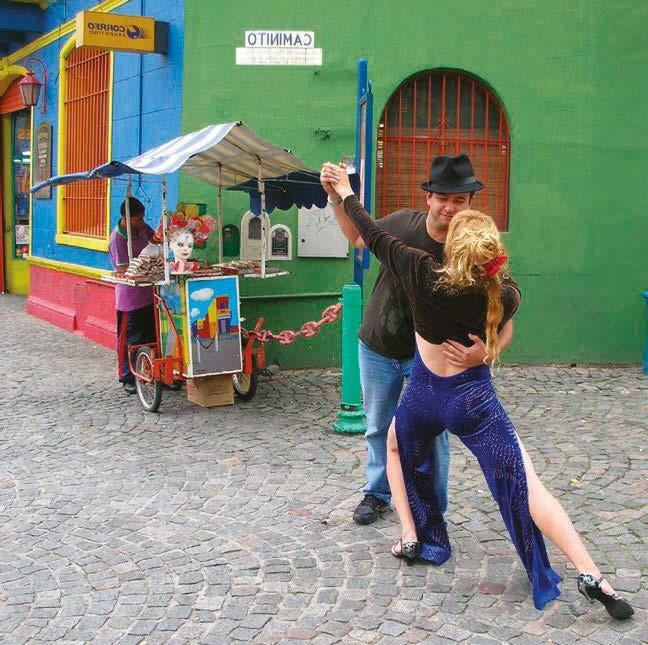

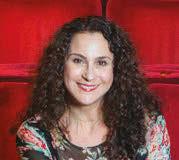
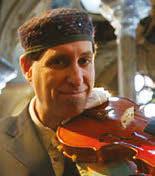
Led by Yale Strom and Elizabeth Schwartz March 12 – 20, 2023 (plus optional Uruguay extension)
www.ayelet.com

Ayelet Tours is proud to be the official travel partner for Hadassah Israel Tours!

Italian
trip June 11-20, 2023
Feat. Prof.
June 26 - July 8, 2023
ALASKA

Led by Bill Cartiff July 21-28, 2023
 ITALY
singles
Countryside
Stephen Berk
MOROCCO
Led by Bill Cartiff November 2023
ITALY
singles
Countryside
Stephen Berk
MOROCCO
Led by Bill Cartiff November 2023
watched Claude Lanzmann’s seminal Holocaust documentary, Shoah “I left the cinema that night convinced that the name of Rudolf Vrba deserved to stand alongside
Anne Frank, Oskar Schindler and Primo Levi in the first rank of stories that define the Shoah,” Freedland writes. “That day may never come. But maybe, through this book, [he]
might perform one last act of escape: Perhaps he might escape our forgetfulness and be remembered.”
 —Curt Schleier
—Curt Schleier
Maybe you’ve jokingly called yourself a “bad Jew” for not calling your mother or sleeping late instead of going to synagogue; maybe you’ve thought it about someone else, perhaps for their political positions, perceived moral failures or remarks about Israel. What it means to be an American Jew can often feel amorphous or uncertain, and today, with the rise of antisemitism, defining how one can be a “good” or “bad” Jew is even more fraught.
Intertwining history, politics and culture as well as interviews with activists, community leaders and others, journalist Emily Tamkin explores that binary—how different segments of the American Jewish community have vilified others around religion, social concerns, politics and Israel.
In her introduction, Tamkin, who punctuates the book with personal anecdotes, questions whether she herself is the “right kind of Jew” for this sort of exploration. She has little formal Jewish education, never had a bat mitzvah and never visited Israel before researching this book. A member of a Reform congregation, she is determined to create a Jewish household despite noting that her marriage to someone non-Jewish might make her the titular “bad Jew” in the eyes of at least some of the Jewish establishment.
Yet in working on Bad Jews, she writes, “I realized this, too: No one person is an authority on being an American Jew.”
Still, she emphasizes certain unsurprising and well-known truths about American Jewry: That the topic of identity is the source of endless disagreement, debate and discourse, and “As a monolithic or hegemonic entity, the Jewish community does not exist.”
Tracing Jewish acculturation and assimilation through different moments in the past century—civil rights efforts, the labor movement, the Cold War and today’s left-right political divide—Tamkin touches on how “dominating narratives about what it means to be Jewish in America” left imprints on what we consider appropriate or inappropriate behaviors.
“But,” she writes, “they are just that: narratives, and counternarratives, and counternarratives to the counternarratives. Stories we tell ourselves.”
Chapter titles—“Foreign Jews,” “Zionist Jews,” “Right-Wing Jews,” “Laboring Jews,” “Refugee Jews”— illustrate the broad swathe of Tamkin’s exploration of Jewishness. She also discusses Jewish proximity to whiteness and how this has changed over time, partly due to outside perceptions and social factors—a complex topic she returns to in different chapters.
Then there is Israel, often used today as a sort of litmus test for whether one is a “bad Jew” by a certain segment of the Jewish population. Tamkin examines the impact of the creation of Israel and its subsequent battles for survival and how the relationship of American Jews to the Jewish state has changed over





PERPETUAL YAHRZEIT
Kaddish will be recited annually for your loved one in perpetuity in the Fannie and Maxwell Abbell Synagogue at Hadassah Medical Center beneath Marc Chagall’s iconic stained glass windows.

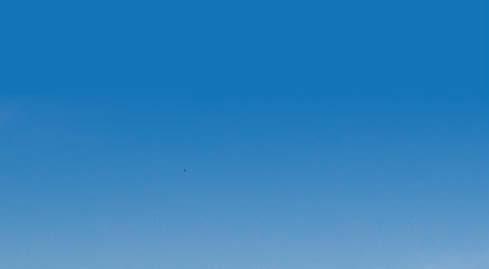
Kaddish will be recited for your loved one daily for 11 months after burial, after which Kaddish will be recited annually.

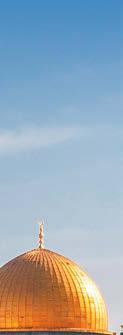
A reservation to ensure Kaddish will be recited for you and your loved ones upon their death. Available in standard and Enhanced Perpetual Yahrzeit.
time. (Interestingly, she also asks Israelis how they feel about that changing relationship.) She interviews Jews who claim an array of views on Israel, from those who are unquestioningly loyal to the country to those for whom Israel is not so important to those who identify as Zionist but reserve the right to criticize Israeli policies. This last group includes Jeremy Ben-Ami, founder of the progressive advocacy group J Street, and Dov Lipman, an American-born oleh and former member of Knesset and political correspondent, who runs a program to help young people make aliyah. The author discusses both of these figures at length.
At a time when questions around American Jewish identity are so divisive, this book is an exploration, albeit an abridged one, of the factors that have helped shape how we see ourselves within the larger social, religious and political context of the last several decades.
As Tamkin writes, “I would argue that the fact that we are in a time of change and conflict and challenge has thrown many American Jews off balance. Things are not as they were. But that, in turn, means there is an opportunity to think about what things could be.”
—Jaime HerndonJaime Herndon is a writer and avid reader. Her work can be found at Book Riot, Undark, Kveller, Motherly and other places.
While some Jewish girls dream of one day meeting their bashert and having a beautiful wedding—imagining a white dress and elegant venue, not to
mention the house in the suburbs that follows—Alyssa Shelasky never did.
“All I wanted was a cool little life,” the author, journalist and editor of New York magazine’s “Sex Diaries” column writes in her memoir, This Might Be Too Personal: And Other Intimate Stories.
Maybe that’s why the opening chapter, titled “Are You Okay?,” finds her bloodied, barefoot and disheveled, her fancy dress torn, running across Manhattan’s West Side Highway to get away from the wedding of one of her former fiancé’s close friends. She had called off her own engagement the previous night. Then a new reporter at Us Weekly, she was regularly partying hard with celebrities and supermodels. “Everything about getting married felt wrong,” she’d told her mom even as she was registering for her wedding gifts.
“I didn’t give a shit about having a wedding or becoming a wife,” she writes. “I was already counting the affairs I would need to have make me feel alive in the marriage—and had recently started several of them.”
In pursuit of a nontraditional life, but also in search of a big love, Shelasky writes about falling for all sorts of unmarriable men, like the Greek Orthodox dentist whose family, despite all his promises, would never accept her.
“The crazy part was, as a Jew, I already understood all the inner conflict and deep-rooted anxiety around the family,” she writes in the chapter “See Alyssa Date,” adding: “Which is not to say I didn’t try to convert myself to Greek Orthodox, because I did, but even the nuns wouldn’t take me….”
In another chapter, Shelasky explains that she named her book after a question her idol Sarah Jessica Parker asked when Shelasky was
Order these books directly through the Hadassah Magazine website! Just go to Hadassahmagazine.org and click on Guide to Jewish Literature.
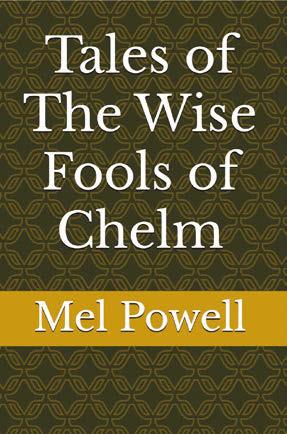
Jewish humor enthusiasts know that the mythical village of Chelm is where the Wise Fools live. These modern short-form tales, 2-3 pages each, were read aloud in a SoCal synagogue, including scripted stories for multiple readers. Join Berel the Beadle, Rivka the Baker, Boris the Balagoola, and more in standalone quick tales. Animals, youth, commerce, aging, health, tradition…a story for every theme, fun and punchy.
410 pages, from Amazon in paperback and Kindle.
Saga of Generations is a family story of Jewish people, some who escaped the horrifi c murderous ways of Russia taking place in 1818, going through generations over four continents, including the World War 1. This book includes love, lust, and heartache. Read and you will feel that each of these characters are part of your family.

Available from Barnes & Noble, Amazon & e-books.

Mel Weiser
Days are bad in the Great Depression of the 1930s. But for little Willie Mittleman and the Mittleman clan in their Bronx, NY neighborhood, life is still good, proving that laughter and love will always be the lifesaving forces to rescue us from adversity and pain. A big-hearted gem. Funny, touching and insightful. For readers of all ages.
Available on Amazon.
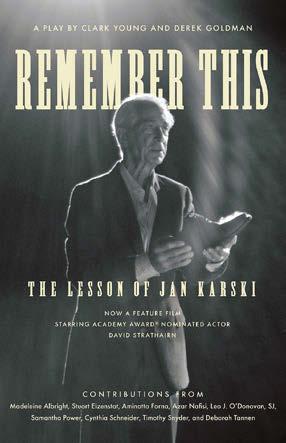
Clark Young and Derek Goldman
With Madeleine Albright, Stuart Eizenstat, Aminatta Forna, Azar Nafi si, Leo J. O’Donovan, Samantha Power, Cynthia Schneider, Timothy Snyder, David Strathairn, and Deborah Tannen Richly illustrated with stills from the black-andwhite fi lm adaptation of the acclaimed stage play, Remember This tells the story of Holocaust witness Jan Karski, who risked his life to carry reports from war-torn Poland to the Allied nations and Oval O ce. This play carries forward his legacy of bearing witness so others may follow his example to share the truth and fight for human rights.
PB, 978-1-64712-168-6, $19.95 | EB, 978-1-64712-169-3, $19.95. http://press.georgetown.edu/book/georgetown/remember
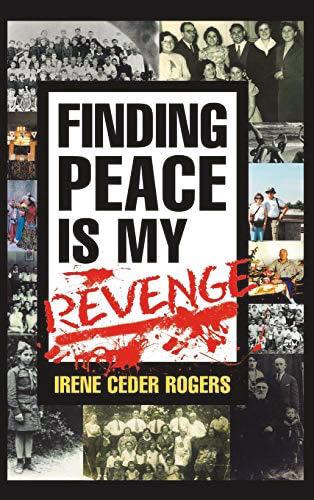

Jonathan Stone

Welcome to Otisville Prison in upstate NY –the only Jewish prison in the federal system – where a talkative crew of whitecollar criminals, led by a rabbi and fellow convict, hold daily services, debate Talmud and ethics… until a celebrity inmate’s arrival upends everything. “A puckish Philip-Rothesque satire” – Publishers Weekly. “Delectable...glorious...you want immediately to read it all over again...this most cherishably Jewish of books.” – Jewish Chronicle. Available in paperback and e-book from Amazon and all online bookstores.

Irene Ceder Rogers
Finding Peace, a deeply moving story of hope and human spirit, endeavors to achieve a better world without prejudice. Educates people how to live in peace truly accept and respect diversity. The book narrates the remarkable life journey of a Holocaust survivor living in orphanages and shares a true story of the indomitable human spirit, through hardships and o ers hope. Many years, Irene dreamed of fi nding her parents’ and little sister’s burial places in Andijan, Uzbekistan. Finally, in the 1998, ElderTreks tour o ered her husband a fantastic adventure traveling challenging roads into regions rarely explored by Westerners.
Available on Amazon.

Liza Wiemer
Inspired by a real-life incident. When a favorite teacher gives an assignment requiring students to pretend they’re Nazis and debate the Final Solution, two brave teens speak up and refuse to participate. The situation explodes, forcing the school and larger community to confront antisemitism and bigotry. What does it take for tolerance, justice, and love to prevail? Find out in this riveting, fast-paced, multi-award-winning novel.
Available in hardcover, e-book, paperback, and audio wherever books are sold. Free curriculum guide through Penguin Random House. Liza will speak to Hadassah chapters, synagogues, schools, and other groups. Visit lizawiemer.com for more information.
Florence
An award-winning and riveting historical novel of four generations of an immigrant family. When matriarch Ida escapes a pogrom in Ukraine determined to save her family, she cannot foresee the struggles of her descendants. Through war, mental illness, secrets and betrayal, each generation’s actions impact the lives of the next, as love and loyalty is tested by secrets and betrayal. You will recognize these family members and grieve and rejoice with them. Readers cannot put the book down. Gift it. Pick it for your book club and author will Zoom with you for a lively conversation. Available in paperback, audio, and e-book on Amazon. com, or wherever you buy books on author website www.florencereisskraut.com


Explore the themes of Purim - good versus evil, moral courage, hiding one’s feelings, the moon – in this award winning coming-of-age novel about Mira Adler and what she learns about life and love from her Yiddish and violin teacher, Chaver B, a recent immigrant from Prague who is mysterious and paradoxical, and who Mira believes harbors a painful secret. Kirkus Reviews named it one of the Best Books of 2021 and called it “compelling…poignant and eloquent.” Ideal for ages 13-103, book clubs, and classrooms. Discussion guide available on request. See www.PrairieSonata.com for more reviews and details on purchasing. Available in hardcover, softcover, and e-book.
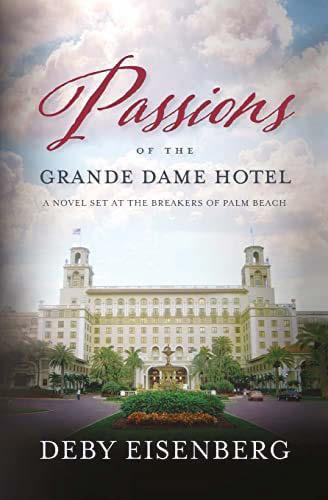 Deby Eisenberg
Deby Eisenberg
Compelling historical fi ction. In WWII, The Breakers Hotel became an army hospital where over a dozen babies were born. Passions and fires will forever change the lives of three women, whose heartrending journeys weave through the timeline of the resort, including Rebecca, an alluring Russian Jewish immigrant in the 1920s, whose fiancé disappears when she follows him to America. Book and e-book available on Amazon. www.debyeisenberg.com.
A compelling crime story stretching from Dallas to the timeless cosmos, Angels in Dallas is also a search for lost identity and quest for ancient dogma against the backdrop of the city’s mid-1980s chintzy glitz. Texas history, mythic Judaica, sinister schemes, Nazi remnants and quirky characters, including hard-boiled, harddrinking reporter Sam Silver, who stumbles upon the biggest story of his life, fuel this mystery thriller. Written by a Pulitzer Prize winner, this is a rollicking ride to the last page. Available on Amazon and at sdlevin.com.

 Edited by Steve Zeitlin; lead commentary by Peninnah Schram
Edited by Steve Zeitlin; lead commentary by Peninnah Schram
New from the Jewish Publication Society, this book is the fi rst of its kind: the living tradition of Jewish stories and jokes transformed into poems, recording and reflecting Jewish experience from ancient times through the present day, with running commentary and questions for discussion. Available wherever books are sold or from the University of Nebraska Press 800.848.6224 and at nebraskapress.unl.edu/jps.
interviewing the actress for an article (it was a query about the dress that Shelasky wore to the interview). Indeed, the essay describes how Shelasky herself had been frequently compared both by friends and colleagues to Carrie Bradshaw, Parker’s
character on Sex in the City.
Shelasky, a self-described cultural Jew, possesses an abiding faith in a benevolent God and is close with her family. Her parents live in the same Brooklyn apartment building as she does, and her sister in the
HADASSAH, THE WOMEN’S ZIONIST ORGANIZATION OF AMERICA, INC. 40 Wall Street, 8th Floor – New York, NY 10005 – Telephone: (212) 355-7900 Contributions will be used for the support of Hadassah’s charitable projects and programs in the U.S. and/ or Israel including: medical relief, education and research; education and advocacy programs on issues of concern to women and that of the family; and support of programs for Jewish youth. Financial and other information about Hadassah may be obtained, without cost, by writing the Finance Department at Hadassah’s principal place of business at the address indicated above, or by calling the phone number indicated above. In addition, residents of the following states may obtain financial and/or licensing information from their states, as indicated. DC: The Certificate of Registration Number of Hadassah, The Women’s Zionist Organization of America, Inc. is #40003848, which is valid for the period 9/1/2021-8/31/2023. Registration does not imply endorsement of the solicitation by the District of Columbia, or by any officer or employee of the District. FL: A COPY OF THE OFFICIAL REGISTRATION AND FINANCIAL INFORMATION FOR HADASSAH, THE WOMEN’S ZIONIST ORGANIZATION OF AMERICA, INC. (#CH-1298) AND HADASSAH MEDICAL RELIEF ASSOCIATION, INC. (#CH-4603) MAY BE OBTAINED FROM THE DIVISION OF CONSUMER SERVICES BY CALLING TOLL-FREE 1-800-HELP-FLA, OR ONLINE AT www.FloridaConsumerHelp.com. KS: The official registration and annual financial report of Hadassah, The Women’s Zionist Organization of America, Inc. is filed with the Kansas Secretary of State. Kansas Registration #237-478-3. MD: A copy of the current financial statement of Hadassah, The Women’s Zionist Organization of America, Inc. is available by writing 40 Wall Street, 8th Floor, New York, New York 10005, Att: Finance Dept., or by calling (212) 355-7900. Documents and information submitted under the Maryland Charitable Solicitations Act are also available for the cost of postage and copies, from the Maryland Secretary of State, State House, Annapolis, MD 21401 (410) 974-5534 MI: Hadassah, The Women’s Zionist Organization of America, Inc. MICS #13005/Hadassah Medical Relief Association, Inc. MICS # 11986/ The Hadassah Foundation, Inc. MICS #22965. MS: The official registration and financial information of Hadassah, The Women’s Zionist Organization of America, Inc. may be obtained from the Mississippi Secretary of State’s office by calling 1(888) 236-6167. NJ: INFORMATION FILED BY HADASSAH, THE WOMEN’S ZIONIST ORGANIZATION OF AMERICA, INC. AND HADASSAH MEDICAL RELIEF ASSOCIATION, INC. WITH THE NEW JERSEY ATTORNEY GENERAL CONCERNING THIS CHARITABLE SOLICITATION AND THE PERCENTAGE OF CONTRIBUTIONS RECEIVED BY THE CHARITY DURING THE LAST REPORTING PERIOD THAT WERE DEDICATED TO THE CHARITABLE PURPOSE MAY BE OBTAINED FROM THE ATTORNEY GENERAL OF THE STATE OF NEW JERSEY BY CALLING (973) 504-6215 AND IS AVAILABLE ON THE INTERNET AT www.njconsumeraffairs.gov/charity/chardir.htm. NC: FINANCIAL INFORMATION ABOUT HADASSAH, THE WOMEN’S ZIONIST ORGANIZATION OF AMERICA, INC. AND A COPY OF ITS LICENSE ARE AVAILABLE FROM THE STATE SOLICITATION LICENSING BRANCH AT 919-8145400 OR FOR NORTH CAROLINA RESIDENTS AT 1-888-830-4989. PA: The official registration and financial information of Hadassah, The Women’s Zionist Organization of America, Inc., Hadassah Medical Relief Association, Inc., and The Hadassah Foundation, Inc. may be obtained from the Pennsylvania Department of State by calling toll free, within Pennsylvania, 1(800) 732-0999. VA: A financial statement of the organization is available from the State Division of Consumer Affairs in the Department of Agriculture & Consumer Services, P.O. Box 1163, Richmond, VA 23218, Phone #1 (804) 786-1343, upon request. WA: Hadassah, The Women’s Zionist Organization of America, Inc., Hadassah Medical Relief Association, Inc. and The Hadassah Foundation, Inc. are registered with the Washington Secretary of State. Financial disclosure information is available from the Secretary of State by calling 800-332-GIVE (800-332-4483) or visiting www.sos.wa.gov/charities. WV: West Virginia residents may obtain a summary of the registration and financial documents of Hadassah, The Women’s Zionist Organization of America, Inc. from the Secretary of State, State Capitol, Charleston, WV 25305. WI: A financial statement of Hadassah, The Women’s Zionist Organization of America, Inc. disclosing assets, liabilities, fund balances, revenue, and expenses for the preceding fiscal year will be provided to any person upon request. ALL STATES: A copy of Hadassah’s latest Financial Report is available by writing to the Hadassah Finance Dept., 40 Wall Street, 8th Floor, New York, New York 10005. REGISTRATION DOES NOT CONSTITUTE OR IMPLY ENDORSEMENT, APPROVAL, SANCTION OR RECOMMENDATION BY ANY STATE. Charitable deductions are allowed to the extent provided by law. Hadassah shall have full dominion, control and discretion over all gifts (and shall be under no legal obligation to transfer any portion of a gift to or for the use or benefit of any other entity or organization). All decisions regarding the use of funds for any purpose, or the transfer of funds to or for the benefit of any other entity or organization, shall be subject to the approval of the Board or other governing body of Hadassah. The Hadassah Foundation, Inc. is a supporting organization of Hadassah, The Women’s Zionist Organization of America, Inc. September 2022
same neighborhood.
Throwing the narrative of the happy-go-lucky single girl on its head, Shelasky is dying to be a mom. She doesn’t want the dream of “first comes love, then comes marriage,” but still yearns for the baby carriage part. The essays in This Might Be Too Personal move toward that quest, which culminates in Shelasky having a daughter via a sperm donor.
But that’s not the end of her antifairy tale. When her daughter, Hazel, is only six months old, she meets Sam, who later fathers her second child, a son named River, and adopts Hazel. Her big conflict is that Sam is not Jewish.
“This was not just because I wished for a partner who would feel emotional when I lit the Shabbos candles or kissed a mezuzah or joyfully sang ‘Shalom Alechem’ with Hazel and River,” she writes, “but because I often lamented that Sam would never fully understand me on account of that striking difference in our upbringing and faith. Our cultural differences were not subtle. They frequently came out in the spiritual, the political and the mundane.”
Partnered with Sam but not married to him, a mom of two kids, an author of two books, a television shows in the works, surrounded by family, this is Shelasky’s happily ever after. Not a straight line, not the quintessential Jewish rom-com with wedding bells, but satisfying just the same.

 By Joseph Lowin
By Joseph Lowin
Often, a hebrew word will have more than one meaning, and that meaning can be difficult to convey in a single word or short phrase without losing nuance. Take, for example, the root ע-צ-ב (bettsadi-ayin); in one scenario it means to cut or break off; in another, to profit. But that is not the end of it. Within those meanings, context will give our root a wealth of nuance, from attaining and giving blessings to committing an injustice or getting something done.

The biblical story of Joseph suggests a commercial usage for the root. After Joseph is thrown into a pit by his brothers to die, Judah, one of those siblings, saves Joseph’s life by offering a better deal. His sales pitch begins with, וּניִחָא תֶא גֹרֲהַנ יִכּ עַצֶבּ הַמ (mah betsa ki naharog et ahinu), “What does it profit us to kill our brother?”
The word עַצֶבּ (betsa), which also means lucre or greed, foreshadows a later development in the Joseph story, when he was sold to Ishmaelite slave traders on their way to Egypt. Exodus 18:21 rules that only עַצֶבּ יֵאְנשׂ (son’ei betsa), literally, haters of money, but more figuratively, those not subject to bribery, are to be appointed as judges. The prophet Isaiah uses our root to add an important nuance, assuring his followers that God עַצַּבְי (yivatsa), “will accomplish successfully,” all His initiatives.
A second major usage of the root is seen in the word הָעֵצְבָמ (mavtseah), a utensil for slicing bread. Our sages speak often of slicing the Shabbat loaf in a figure of speech that suggests more than its strict definition. In one example, the host who הָלַחָה לַע ַעֵצוֹ בּ (botse’a al ha-hallah), literally, breaks apart the challah, is reminded implicitly to do more—perform a ritual handwashing, recite the ha-motsi blessing and distribute challah to those assembled.
A עַצֶבּ ףֵדוֹר (rodef betsa), literally, one who runs after money, may refer to a wheeler-dealer who, offered a shady deal, asks עַצֶבּ הָמ (mah betsa), “What’s in it for me?” A philosopher on the way to an ethics conference might rejoinder mah betsa?, using the same phrase to mean, “Why seek profit in an immoral way?”
Today, the word עָצְבִמ (mivtsa), operation, may be applied to a military campaign or, if appearing on signs in store windows, announce a sale on goods. One can also congratulate a friend who עָצְבִמ הָתְשָׂע (astah mivtsa), has successfully accomplished an important activity. In popular Israeli slang, that person may be praised, without subtext or nuance, as a טְסיִעוּצּבּ (bitsu’ist), one who handily gets things done.
For most of her adult life, galit cohen has been dedicated to improving Israel’s environment. Currently serving as director general of the country’s Ministry of Environmental Protection, Cohen has been one of the driving forces behind the country’s environmental policies, leading efforts to help Israel become more sustainable and ecologically aware for more than 20 years.

With degrees in earth sciences and geography, including a specialization in environmental policy and management, Cohen, 53, a resident of Jerusalem, held a variety of roles in the ministry before being tapped to head it by Tamar Zandberg, the former environmental protection minister.
What were Israel’s main goals at COP27?
We decided to focus on adaptation [to climate change] because of the location of the conference and the challenges this region faces. We prepared a climate risk map with geographical data about the risks facing Israel and how they impact people, in order to create a one-step tool for government decision-making and priorities. We shared this information and our methodology with neighboring countries, which face similar challenges.
Another of our goals was to share Israeli innovation and technology with the entire world, especially renewable energy, solar storage, water shortage and agricultural solutions. For the first time, we decided to have an Israel pavilion and held 38 professional events there.
Did Israel achieve its goals at the conference?
At the summit, we focused on issues such as protecting the coral
Her education, expertise and experience have allowed her to champion some of the country’s most far-reaching internal environmental policies. Some of her accomplishments include introducing quality-of-life indicators to help guide the government in its decision-making process on ecological policies and initiating projects to protect and rehabilitate the country’s natural resources and environment, including tackling cliff erosion along the Mediterranean coastline.
Cohen has also been at the forefront of Israel’s environmental diplomacy, showcasing globally the country’s research, innovation and technology in the field of climate change. She was a key figure in the country’s delegation to the United Nations Climate Change Conference, COP27, held in November in Sharm el-Sheikh, Egypt. This interview has been edited for brevity and clarity.
reefs in the Red Sea, which we share with Egypt, Jordan and Saudi Arabia, and on areas such as water treatment and recycling, agriculture and food security solutions, desert-tech and the mitigation of greenhouse gas emissions. We also signed a declaration of intent with Jordan on the [ecological restoration and protection] of the Jordan River and a memorandum of understanding with them to share water and energy resources.
The most critical challenge is waste management. Most of our waste goes into landfill sites, which is bad. We know what needs to be done—we would like to see landfill reduced to 20 percent of all waste rather than the current 80 percent. To do this, we need to separate the waste and establish a recycling facility in Israel. What we really need here is a new law to make this a priority [as only minimal and optional
recycling currently exists].
What are Israel’s greatest ecological achievements in recent years?
The reduction of air pollution caused by industry. There are still some challenges with public transportation and industrial waste fires, but overall, we have reduced air pollution in Israel. We could not have achieved this without the Clean Air Law that passed in 2008.
Has there been a change in how environmental issues are viewed in Israel?
Over the years, I have seen a change, with environmental issues becoming more a part of the political agenda and public awareness.
Now, with the climate crisis, everybody understands that it’s here to stay and we have to deal with this—we all need to make some hard decisions.
Ruth Marks Eglash is a Jerusalem-based veteran journalist who writes for multiple outlets.









